Sign up for our November 2024 OUPV Captains Course!


Cruising Catamaran Certification Course
Four days to learn to cruise on a catamaran! June 6th - 9th 2024
Quick Details
Clock Duration: 4 days & 4 nights
Users Group Size: This course is designed for 4 people (typically 2 sets of students)
Cruise Ship Boat Details: 38′ catamaran – Private cabin & shared living space
Food Food/Drink: Provisions are coordinated by attendees
Learn to cruise on a catamaran!
The Cruising Catamaran Certification Course is a four-day sailing class designed to create confident, competent catamaran sailors. You’ll spend the first day learning the fundamentals of sailing while aboard a 33-39’ monohull. This is the perfect setting to learn terminology, sail trim and boating basics. Days 2-4 have you practicing and exhibiting those new skills aboard your catamaran classroom. From start to finish, you will get the feel for truly living aboard a catamaran from provisioning and cooking to cleaning. This is the perfect course for those that have always dreamed about sailing away on a catamaran or those who want to upgrade their skills.
This course is designed to train two sets of students at a time but can be set up as a private course for an additional fee. You should bring your own bedding and towels and plan to work with the other students to provide and prepare provisioning while on board the boat. You will spend one overnight at anchor with your instructor on board. The rest of the time, you can plan on living on the boat while in the marina.
Learn to cruise on catamarans! Book today!
- Chevron down When is the course?
We offer multiple course offerings throughout the sailing season!
June 6th – June 9th, 2024, with boarding available the evening of June 5th, 2024!
July 19th – July 22nd, 2024, with boarding available the evening of July 18th, 2024! – This Course is Currently Full.
Inquire about additional dates available. Custom trips also available.
- Chevron down How much does this cost?
The course is priced so that course has four students – taught in pairs, perfect for couples!
Double Occupancy Price – $3,052/couple + tax
Solo Sailor Price – $2,035/person + tax
- Chevron down What's included?
- Four days and four nights living aboard a catamaran – you will have your own private cabin, but shared living space – don’t forget to bring bedding, towels and provisioning supplies
- Boat is equipped with all safety gear required by USCG – rentals of inflatable life vests at no cost
- Course materials – two online training courses and training book
- Personalized training with a USCG Licensed Captain
- Insurance coverage for the training vessels
- Chevron down What's the schedule?
Arrival Day
Board the boat around 6 pm, meet the instructor, board the catamaran, stow gear and provisions – on your own for dinner
Day 1 8:30 am – Your instructor will meet you at your vessel – hands on instruction begins after completing paperwork with office staff. Grab gear and board your monohull training boat for the day. Learning terminology, sailing and maneuvering fundamentals.
4:30 – Arrive back in marina and dock training on boat, debrief, relax or study, dinner on your own – stay on-board the catamaran
Day 2 8:00 am – Captain boards the catamaran for training session – quick intro to catamaran systems and practice maneuvers, sail handling, safety practices 5:00 – Arrive back in marina and dock training on boat, debrief, relax or study, dinner on your own – stay on-board the catamaran
8:00 am – Captain boards the catamaran for training session – students implement their new skills, plotting a course for the day, learn anchoring and overnight procedures on boat – Captain stays on boat for overnight training while anchoring. Students can plan to cook and clean up as if you were bareboat chartering. Cooking aboard is part of the learning process.
8:00 am – Students sail on their own, for their practical testing back to the marina.
2:00 pm – Arrive back in marina and dock the boat. Students will clean the boat as required from all charter guests. After off-boarded, students will be awarded certificates of completion. Off-board no later than 3 pm.
Courses dates are set, if you would prefer a private course please let us know.
- Chevron down What will I learn?
The Cruising Catamaran Certification Course prepares you for catamaran cruising on your own, whether bareboat chartering (without a professional captain or crew aboard) or cruising on your own boat. You will learn not only the sailing and boat handling aspect, but how the vessel systems work, how to cook and live aboard, it is all part of the learning experience. Depending on the learning pace of all in your class (maximum four per boat per instructor unless you opt for a Private Course for two to six people), the following knowledge and skills will be learned and practiced during your live-aboard cruising course.
- Planning a cruise
- Familiarization with boat layout and sail plan
- Operation of engine, stove and head and preparation of meals
- Routine engine maintenance
- Use and conservation of battery and charging systems
- Water use and conservation
- Use and location of thru-hull fittings
- Maneuvering under power and sail with emphasis on windage considerations and close quarters – learning this on a monohull and catamaran
- Big boat docking and anchoring techniques
- Proper and safe handling of halyards and lines
- Proper and safe use of winches
- Apparent wind and sail selection
- Sail shape and trim
- Inter-crew communication when trimming sails, docking and anchoring
- Jib roller furling use
- Overboard recovery procedures
- Big boat heavy weather and reefing techniques for catamarans
- Boom preventer use
- Spring lines and dock line configurations
- More knots and their applications
- GPS navigation
- Rules of the Road
- Danger bearings
- Coast Guard requirements
- Courtesy using lights and sound signals
- Use of safety harness
- Emergency tiller use
- Distress signals
Sailing is a physical activity that people of all ages can participate in and appreciate, but being physically fit will increase sailing performance and safety. These trips are hands-on activities that require complete, unaided mobility getting on and off docks, boats, and dinghies.
Related Charters
- Clock 3 Days
Bareboat Sailor Certification Course
No previous sailing experience required! Our three-day Bareboat Sailor Certification Course is designed to prepare you to charter a sailboat on your own & give you hands-on experience at anchoring overnight in the Apostle Islands.
- Clock 2 Days
Intermediate Sailor Certification Course
Our Intermediate Sailing Certification is designed for those who have experience sailing but have not been in the role of a responsible skipper yet. This course qualifies you to charter up to a 33′ boat!

Learn How to Sail a Catamaran: Beginner’s Guide to Mastering Catamaran Sailing
Alex Morgan
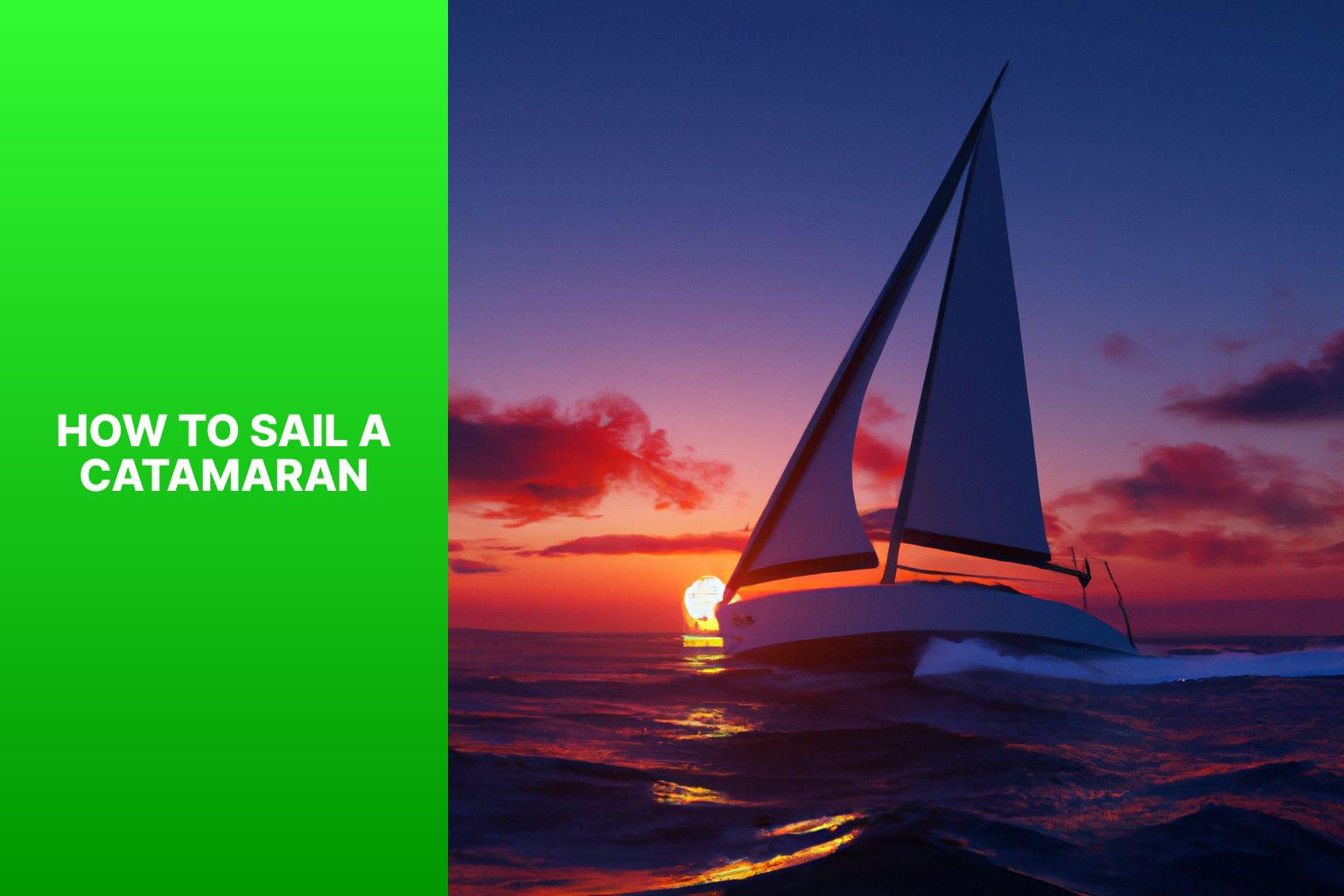
Sailing a catamaran offers a unique and thrilling experience on the water. Whether you are a seasoned sailor or a beginner, understanding the essentials of catamaran sailing is vital to have a safe and enjoyable journey. In this guide, we will explore the different aspects of sailing a catamaran, from its advantages to the essential equipment, basic sailing techniques, advanced maneuvers, and navigation and safety tips. Let’s dive in and discover how to sail a catamaran like a pro.
Introduction to Catamarans: Catamarans are multi-hulled vessels that have gained popularity in the sailing world for their unique design and capabilities. Unlike traditional single-hulled sailboats, catamarans feature two parallel hulls connected by a deck, offering stability and spaciousness. The design of a catamaran allows for enhanced performance, comfort, and versatility.
Why Choose a Catamaran for Sailing? Before delving into the specifics of sailing a catamaran, it is important to understand the advantages that these vessels offer:
1. Stability on the Water: Catamarans are known for their exceptional stability, which is attributed to their wide and buoyant hulls. This stability makes them less prone to heeling or tipping over, providing a smoother sailing experience.
2. Spaciousness and Comfort: With their wide beam, catamarans offer ample space and room for movement both above and below deck. The spacious interiors often feature multiple cabins, a large saloon, and a well-equipped galley, providing comfort and convenience during extended trips.
3. Shallow Draft: Catamarans have a shallow draft, meaning they require less depth of water to operate. This allows them to explore shallower areas and navigate closer to shorelines, expanding the cruising grounds and opening up new destinations.
4. Speed and Performance: Due to their design and reduced drag, catamarans are renowned for their speed and performance. They have the ability to reach higher speeds, making them perfect for those seeking an exhilarating sailing experience.
By understanding the advantages of sailing a catamaran, you can appreciate why these vessels are a popular choice amongst sailors. In the following sections, we will delve into the essential equipment needed for catamaran sailing, basic and advanced sailing techniques, as well as navigation and safety tips to ensure a successful and enjoyable catamaran sailing experience.
Key takeaway:
- Stability on the water: Catamarans offer excellent stability, making them a preferred choice for sailing. The two hulls provide a wider base, reducing the risk of capsizing and providing a smooth sailing experience.
- Spaciousness and comfort: Catamarans offer more living space compared to monohulls, providing comfort for passengers and crew. The wide beam allows for spacious cabins, lounging areas, and enhanced privacy.
- Speed and performance: Catamarans are known for their speed and performance. With two hulls and reduced drag, catamarans can achieve higher speeds and offer thrilling sailing experiences to enthusiasts.
Why Choose a Catamaran for Sailing?
When it comes to sailing, why should you choose a catamaran? Well, for starters, they offer unparalleled stability on the water. Not to mention, their spaciousness and comfort make for an enjoyable and relaxing sailing experience. Catamarans have a shallow draft , allowing you to explore shallower waters that other boats may not be able to reach. And let’s not forget about their impressive speed and performance . So, if you’re looking for a thrilling and comfortable sailing adventure, a catamaran is the way to go!
Stability on the Water
Stability on the Water is crucial when sailing a catamaran. Catamarans have twin hulls that create a wide and stable platform, distributing weight evenly and reducing the risk of capsizing. The catamaran’s wide beam also enhances stability, resisting tipping.
Catamarans offer increased comfort and safety on the water. Passengers can move freely without losing balance or feeling seasick. The stable platform also allows for activities like sunbathing or dining, making for a pleasant experience.
Catamarans have better handling and maneuverability , thanks to their stability. They maintain a level sailing position even in rough waters, providing a smoother and more comfortable ride. This stability also enables higher speeds, perfect for those seeking excitement .
It is important to note that external factors like wind and waves can still affect catamarans’ stability. Proper sailing techniques and safety protocols are essential for optimal stability.
Spaciousness and Comfort
Catamarans offer ample space and comfort, making them ideal for sailing enthusiasts. The large living areas and wide hulls provide plenty of room to relax and enjoy the water. The trampoline between the hulls is a comfortable spot for sunbathing and taking in the views.
The spaciousness of catamarans translates to comfortable interiors with multiple cabins, bathrooms, and a well-equipped galley. This allows for privacy and convenience, perfect for extended sailing trips or larger groups.
With their dual-hull design, catamarans offer excellent stability on the water, reducing the likelihood of seasickness and providing a smooth sailing experience.
The wide beam of a catamaran minimizes motion, creating a stable and enjoyable ride. This is beneficial for those sensitive to motion or seeking a relaxed sailing experience.
Shallow Draft
The shallow draft of a catamaran allows it to navigate in shallow waters, which other types of boats cannot access. This advantage is especially helpful when exploring coastal areas, lagoons, or cruising around sandbanks or coral reefs.
The catamaran achieves a shallow draft by designing the hulls with reduced depth. This allows the boat to float in shallower waters, reducing the risk of running aground and enabling access to secluded anchorages and coves. In addition, the shallow draft enhances maneuverability in tight spaces, such as narrow channels or smaller marinas.
Compared to deeper-draft monohull sailboats, catamarans with a shallow draft also have less vulnerability to underwater obstacles like rocks or coral, making sailing safer. It’s important to note that each catamaran model will have its own specific shallow draft measurement provided by the manufacturer.
When planning sailing routes and exploring areas with limited depth, considering the shallow draft of a catamaran is crucial for a safe and enjoyable experience on the water.
Speed and Performance
A catamaran is well-known for its exceptional speed and performance on the water, which makes it a preferred choice for sailing enthusiasts.
Due to its ingenious dual-hull design, a catamaran experiences minimal drag in the water, resulting in the ability to reach higher speeds compared to monohull sailboats.
The wide beam of a catamaran not only enhances its stability but also reduces the risk of capsizing, enabling faster sailing in stronger winds.
With its lightweight structure and sleek shape, a catamaran effortlessly glides through the water, maximizing its speed potential.
Catamarans consistently maintain higher speeds, making them an ideal option for lengthy sailing trips or competitive racing.
Catamarans have a reduced wetted surface area, which minimizes resistance from the water and leads to improved efficiency and performance.
Another advantage of a catamaran is its shallow draft , allowing it to navigate shallower waters with ease, thereby increasing its versatility and suitability for coastal exploration.
Catamarans boast a spacious deck layout , providing ample room for passengers to move around comfortably and accommodating various amenities and recreational activities.
Catamarans offer a smooth and stable sailing experience, even in choppy or rough sea conditions, ensuring optimal comfort for all those on board.
Essential Equipment for Sailing a Catamaran
When it comes to sailing a catamaran, having the right equipment is crucial. In this section, we’ll dive into the essential gear you’ll need for a smooth sailing experience. From the sails and rigging that harness the wind’s power to the rudder and steering controls that guide your vessel, we’ll cover it all. We’ll also explore the importance of anchoring and docking techniques , as well as the safety gear that ensures you’re prepared for any unexpected challenges on the open water. Get ready to gear up and set sail!
Sails and Rigging
When it comes to sailing a catamaran, understanding the importance of sails and rigging is crucial. The sails power the boat and enable it to move through the water, while the rigging supports and controls the sails. Here are some key points to consider about sails and rigging:
1. Sail design: The design of the sails, including their size, shape, and material, plays a significant role in the catamaran’s performance. High-performance racing catamarans often have larger, more efficient sails that generate greater speed.
2. Rigging setup: The rigging on a catamaran consists of the mast, shrouds, and various lines and controls. Proper tensioning and adjustment of the rigging ensures correct sail positioning and overall balance of the boat.
3. Sail controls: Catamarans have several controls for adjusting the sails while sailing. These include the mainsheet, which controls the main sail, and the jib sheets, which control the jib sail. Learning how to trim and adjust these controls optimizes performance.
4. Sail handling: Proper handling of the sails is crucial for smooth sailing. This involves hoisting, lowering, and reefing the sails in strong winds. Understanding safe and efficient sail handling techniques is essential.
Now, let me share a true story to illustrate the importance of sails and rigging. During a sailing race, a catamaran led the fleet due to its well-designed sails and properly rigged mast. The crew efficiently adjusted the sails using the various controls, allowing the catamaran to effectively harness the wind’s power. As a result, they maintained optimal speed and maneuverability, securing victory in the race. This highlights how understanding and utilizing sails and rigging can significantly impact sailing performance.
Rudder and Steering
When it comes to catamaran sailing, the rudder and steering are crucial for maneuvering the vessel efficiently. Here are some key points to consider:
- The rudder is an important part of a catamaran’s steering system. It is usually located at the rear of the boat and controls the vessel’s direction.
- Catamarans typically have two rudders , one on each hull, which provide improved stability and control.
- Steering a catamaran involves using the tiller or wheel, depending on the type of steering system. The helmsman turns the tiller or wheel to adjust the direction, which in turn moves the rudders .
- When sailing upwind, it is necessary to steer slightly higher into the wind to maintain speed and prevent excessive leeway.
- Downwind sailing requires adjusting the course to downwind angles, allowing the wind to fill the sails from behind.
- Proper rudder and steering adjustments are essential for maintaining balance and preventing excessive heel or capsizing.
- During tacking and jibing, it is important to have the rudder in the correct position to maneuver the catamaran smoothly without losing speed or control.
- Regular inspection and maintenance of the rudder and steering system are crucial to ensure functionality and prevent any issues while sailing.
By understanding and utilizing the rudder and steering effectively, catamaran sailors can confidently navigate the waters and enjoy a safe and enjoyable sailing experience.
Anchoring and Docking
When anchoring and docking a catamaran, it is important to consider the following factors:
1. Choose a suitable anchor for the size and weight of your catamaran , taking into account the seabed type and prevailing weather conditions. The plow anchor is widely favored due to its strong holding power and versatility.
2. Lower the anchor gently and gradually, allowing it to settle properly on the seabed. Pay attention to the water depth and use a scope ratio of 7:1 (7 feet of anchor rode for every foot of water depth) to ensure sufficient holding power.
3. Secure the catamaran by attaching the anchor rode to a cleat or designated anchor attachment point on the boat. Make sure to apply proper tension to prevent excessive movement.
4. When approaching the dock, do so slowly and cautiously, taking into consideration factors such as wind , current , and nearby boats. Use your engines and rudders to maneuver smoothly.
5. Employ appropriate docking techniques based on the type and design of the dock. Consider utilizing spring lines or fenders to assist in securing the boat and protecting the hulls.
Pro-tip: Regularly practicing anchoring and docking maneuvers will improve your skills and give you confidence in handling your catamaran under different conditions. Proper technique and experience will greatly enhance your overall sailing experience.
Safety Gear
When sailing a catamaran, having the right safety gear is crucial. Here are some essential safety gear items for catamaran sailors:
- Life Jackets: Wear properly fitting and Coast Guard-approved life jackets for everyone onboard.
- Throwable Devices: Keep easily accessible throwable devices, such as life rings or cushions, for emergencies.
- EPIRB: An Emergency Position Indicating Radio Beacon (EPIRB) helps rescuers locate you in emergencies.
- Flares: Carry a set of marine flares to signal for help in low visibility or emergency situations. Check the expiration dates regularly.
- Fire Extinguishers: Have at least one marine-grade fire extinguisher onboard to quickly put out potential fires.
- First Aid Kit: Keep a well-stocked first aid kit onboard to treat minor injuries or provide initial care before professional help arrives.
- Navigation Lights: Ensure your catamaran has properly functioning navigation lights for visibility during low-light conditions.
- VHF Radio: A VHF marine radio is essential for communication with other vessels and contacting emergency services if needed.
- Anchor and Rode: Carry a reliable anchor and sufficient anchor rode for safe anchoring when needed.
Remember to familiarize yourself with the operation and use of all safety gear onboard your catamaran to be prepared for unexpected situations.
Basic Sailing Techniques for Catamarans
Mastering the art of sailing a catamaran requires a solid foundation in basic sailing techniques. In this section, we’ll dive into the essential skills you need to navigate the waters with confidence. From understanding points of sail to mastering tacking and jibing , we’ll cover the maneuvers that will enhance your catamaran sailing prowess. We’ll explore the crucial aspects of sail trim and balance , as well as maneuvering in different wind conditions . Get ready to set sail and embrace the thrill of catamaran adventures!
Understanding Points of Sail
Understanding points of sail is crucial for successful catamaran sailing. It refers to the different angles at which a sailboat can sail relative to the wind. Different techniques and adjustments are required for optimal performance based on the point of sail. The main points of sail are:
1. No Sail: When the boat is not under sail and the sails are completely down.
2. Close Hauled: Sailing as close to the wind direction as possible, typically at an angle of 45 degrees or less.
3. Beam Reach: Sailing perpendicular to the wind direction, with the wind coming directly from either side of the boat.
4. Broad Reach: Sailing with the wind coming from behind the boat at an angle.
5. Running: Sailing directly downwind, with the wind coming from directly behind the boat.
To effectively sail a catamaran, it is crucial to understand how to adjust and trim the sails, as well as steer the boat based on the current point of sail. Practice and experience will enhance your proficiency in handling different wind conditions and making the necessary adjustments for optimal speed and performance.
Remember, prioritize safety while sailing. Familiarize yourself with navigation rules, weather patterns, and emergency preparedness to ensure a smooth and enjoyable catamaran sailing experience.
Tacking and Jibing
Tacking and jibing are vital sailing techniques for catamarans . These maneuvers allow you to change direction and navigate effectively. Below are the step-by-step instructions for tacking and jibing:
1. Tacking:
– Direct the catamaran towards the wind until the sails start to luff . – Release the jib sheet and ensure it smoothly crosses the boat, avoiding any entanglement. – Turn the bow of the catamaran into the wind, managing the mainsail as it fills with wind on the opposite side. – Adjust the jib sheet on the new leeward side to capture the wind and maintain speed. – Make any necessary adjustments to the heading and sails to resume your desired course.
– Prepare the catamaran by getting the jib and mainsail ready for the change in direction. – Steer the catamaran away from the wind, ensuring that the mainsail is backed by the wind. – Release the mainsheet and swiftly swing the boom across the cockpit to the opposite side. – Trim the mainsail and jib to harness the wind from the new direction, effectively maintaining control and speed. – Adjust the heading and sails as needed to resume your desired course.
By mastering these techniques, you can skillfully maneuver your catamaran, enhancing the enjoyment and efficiency of your sailing. Always consider the wind direction and adjust your sails accordingly to maintain control and optimize efficiency throughout your journey.
Sail Trim and Balance
Sail trim and balance are crucial for effective catamaran sailing. Proper sail trim ensures optimal performance and speed , while balancing the sails evenly distribute the pressure between them and prevent excessive heeling of the boat . Adjusting the angle, tension, and position of the sails in response to wind conditions is essential for achieving the desired sail trim and balance.
One way to achieve sail trim and balance is by adjusting the position of the traveler , which controls the lateral movement of the mainsail. Moving the traveler to leeward allows the sail to take in more wind, improving the sail trim, while moving it to windward reduces exposure, compensating for gusts or changes in wind direction.
In addition, adjusting the tension of the halyards and sheets can further fine-tune sail trim and balance. By tightening or loosening these lines, you can optimize the shape and curvature of the sails , ultimately improving their performance.
It is important to continuously monitor and make adjustments to sail trim and balance while sailing. Being responsive to changing wind conditions and making timely adjustments will enhance overall performance and ensure a smoother, more enjoyable sailing experience .
Keep in mind that mastering sail trim and balance takes practice and experience . Paying attention to these factors will significantly improve your catamaran sailing abilities.
Maneuvering in Different Wind Conditions
Maneuvering a catamaran in different wind conditions requires specific steps for optimal control and performance. In order to achieve this, it is important to assess the wind direction by observing nearby objects or using a wind indicator. Once the wind direction is determined, adjust the sails based on the wind direction. For downwind sailing, set the mainsail and jib on opposite sides, while for upwind sailing, position the sails closer together.
Next, it is crucial to trim the sails properly to maximize lift and minimize drag. In lighter winds, the sails should be loosened, while in stronger winds, they should be tightened. Using the mainsail traveler to adjust the position of the mainsail sheet can optimize sail shape and control in different wind angles.
To steer the catamaran, adjust the rudder accordingly. Smaller course corrections should be made in light winds, while larger adjustments are necessary in stronger winds.
In gusty conditions, it is important to react to gusts by depowering the sails. This can be done by easing the sheets or heading up into the wind, which helps maintain stability.
It is essential to be aware of wind shifts and make necessary adjustments to the course and sail trim.
Practicing sailing techniques such as tacking , jibing , and sailing close-hauled or downwind can significantly improve proficiency in handling the catamaran in various wind conditions.
By following these steps, catamaran sailors can confidently navigate and maneuver their vessel in different wind conditions, ensuring a safe and enjoyable sailing experience.
Advanced Catamaran Sailing Techniques
Ready to take your catamaran sailing skills to the next level? In this section, we’ll dive into the thrilling world of advanced catamaran sailing techniques . Get ready to learn about the exhilarating art of spinnaker sailing , the adrenaline-pumping experience of flying a hull , the secrets of performance tuning , and the challenges and strategies of handling heavy weather conditions . Brace yourself for an adventure on the high seas as we explore the exciting realm of catamaran sailing like never before.
Spinnaker Sailing
Spinnaker sailing is a vital technique used in catamaran sailing to optimize speed. The spinnaker , a balloon-shaped sail, is strategically flown in front of the boat while sailing downwind. By harnessing the wind from a different direction, the spinnaker empowers the catamaran to sail faster and with greater efficiency.
To set up the spinnaker, the crew skillfully hoists it up the mast using a halyard and securely attaches the corners of the sail to the spinnaker pole . Once elevated, the crew precisely trims the sail by adjusting the sheets , controlling its shape and angle. This requires coordination and expertise as the crew works together to steer the boat and fine-tune the sails for optimal balance and speed.
Maintaining awareness of wind conditions is crucial to adapting the spinnaker and avoiding excessive power or loss of control. Spinnaker sailing significantly enhances the performance of a catamaran, enabling it to achieve remarkable speeds and maximize downwind navigation.
When honing spinnaker sailing skills, it is advised to commence in lighter wind conditions and progressively advance as proficiency accrues. Proper training and diligent practice are imperative for a safe and gratifying sailing experience.
Flying a Hull
Flying a hull is a technique used in catamaran sailing. It involves lifting one hull out of the water, allowing the boat to glide on just one hull while the other remains elevated. This technique, known as flying a hull , is commonly used in high winds and requires practice and experience.
To fly a hull, the sailor must position their weight on the windward hull, leveraging their body weight to lift the hull out of the water. This creates less resistance, increasing the catamaran's speed and performance. It can be an exhilarating experience, as the boat skims across the water.
Flying a hull is not without risks and should only be attempted by experienced sailors. It requires a good understanding of the catamaran's dynamics and stability. Proper sail trim and balance are crucial to maintain control and prevent capsizing.
When flying a hull, be prepared for sudden gusts of wind and rapid changes in boat speed. Constant adjustments to sail trim and weight distribution are necessary for stability and control. Prioritize safety, wear appropriate gear, and always be mindful of your limits and the current conditions. With practice and experience, flying a hull can be a thrilling and rewarding aspect of catamaran sailing.
Performance Tuning
- Maintain and inspect all systems and equipment regularly. This includes checking rigging tension , inspecting sails for damage, and ensuring proper alignment of rudders and steering system .
- Clean hull regularly to remove marine growth that can create drag and slow you down.
- Maximize speed through proper sail trim. Experiment with adjustments to find the perfect balance between power and efficiency. Adjust mainsail and jib sheets to achieve desired sail shape and angle to the wind.
- Distribute weight evenly throughout the catamaran for stability and performance. Balance passengers , equipment , and supplies evenly on both hulls to prevent unnecessary drag.
Frequent performance tuning will help you get the most out of your catamaran, allowing for faster and more efficient sailing. A well-tuned catamaran can significantly enhance your sailing experience and give you a competitive edge in races.
Fact: Performance tuning can improve catamaran speed by up to 10%, allowing for swift gliding through the water.
Heavy Weather Sailing
In heavy weather sailing, taking proper precautions is crucial to ensure the safety of both the crew and the catamaran. Follow the steps below when sailing in challenging weather conditions:
1. Check the weather forecast: Before heading out, always check the forecast for potential storms or strong winds. This will help you decide if it is safe to sail.
2. Reef the sails: Reduce the exposed sail area in strong winds. Partially furl or lower the sails to maintain control and stability.
3. Ensure proper ballast: Distribute weight in the catamaran to maintain balance and stability. Shift crew members or equipment to the windward side to offset strong gusts.
4. Monitor the sea state: Pay attention to the sea condition and adjust your course accordingly. Avoid large waves or swells that may cause the catamaran to broach or capsize.
5. Have appropriate safety gear: Carry essential safety equipment like life jackets, harnesses, and tethers. Ensure all crew members are familiar with their use.
6. Maintain constant communication: Keep in touch with other boats or shore stations to report your position and receive important updates or warnings.
7. Stay vigilant: Continuously monitor weather and sea conditions, making adjustments as necessary. Be prepared to make quick decisions and react to environmental changes.
To sail a catamaran safely in heavy weather, proper training and experience are important. If you are a beginner or unfamiliar with heavy weather sailing, seek guidance from a qualified instructor. Remember, safety should always be the top priority when facing challenging weather conditions at sea.
Navigation and Safety Tips for Catamaran Sailing
When it comes to sailing a catamaran, navigation and safety are of paramount importance . In this section, we’ll discover essential tips and techniques that will help you navigate channels and obstacles with ease . We’ll also uncover the mysteries of understanding weather patterns for a smoother sailing experience. To ensure safety, we’ll delve into the art of mooring and docking safely . And finally, we’ll touch upon emergency preparedness , equipping you with the knowledge needed to tackle unexpected situations. Let’s set sail and explore the fascinating world of catamaran sailing!
Navigating Channels and Obstacles
When sailing a catamaran and navigating channels and obstacles, it is important to follow certain steps to ensure safety and efficiency.
1. Plan your route: Take the time to study charts and navigation aids, identifying the safest and most efficient route. Pay attention to potential hazards such as sandbars, reefs, or underwater obstructions.
2. Stay within marked channels: Stick to designated channels and be vigilant about watching navigational markers that guide boats safely through the area.
3. Maintain a safe speed: Slow down when navigating through narrow channels or around obstacles to have better control and quicker reactions if needed.
4. Keep a lookout: Assign a crew member the responsibility of actively watching for boats, buoys, and obstructions. Good communication among the crew is crucial in ensuring everyone’s safety.
5. Use navigation aids: Make full use of onboard GPS systems, charts, and radar to accurately determine your position, marker distance, and potential hazards.
6. Communicate with other boaters: In busy channels, it is important to use VHF radio or visual signals to communicate with other boaters, helping to avoid collisions and ensure safe navigation.
7. Be prepared for changing conditions: Keep in mind that channels can be affected by tides, currents, and weather. Stay updated with the latest information and adjust your navigation plan accordingly.
To successfully navigate channels and obstacles, it is important to practice safe and vigilant sailing techniques. Always prioritize the safety of your crew and vessel, and never underestimate the importance of proper navigation.
Understanding Weather Patterns
Understanding weather patterns is crucial for safe and successful catamaran sailing. Here are some key points to consider:
- Study weather forecasts: Regularly check weather forecasts before your sailing trip. Look for details such as wind speed, wind direction, and any warnings or advisories.
- Learn about local weather patterns: Different locations have unique weather patterns. Understand the typical wind patterns, temperature changes, and seasonal variations in your sailing area to anticipate potential weather changes.
- Recognize signs of changing weather: Keep an eye out for signs of changing conditions while on the water. Signs may include darkening clouds, shifting winds, sudden temperature drops, or changes in wave patterns.
- Be prepared for different weather conditions: Have necessary gear and equipment for various conditions. This includes proper clothing, safety gear, and navigation tools. Prepare for storms, high winds, and other challenging weather situations.
- Adjust your sailing plans accordingly: Based on the forecast and observations while sailing, make necessary adjustments to your route, timing, and activities. Safety should always be the top priority.
Understanding weather patterns will help you make informed decisions and ensure a safe and enjoyable catamaran sailing experience. Prioritize safety and consult with experienced sailors or local authorities when in doubt. Safe sailing and smooth voyages!
Mooring and Docking Safely
Mooring and docking safely are crucial when sailing a catamaran . Here are the steps to follow:
1. Approach the dock or mooring area carefully, considering wind and current conditions.
2. Assign crew members to handle lines and fenders for a smooth docking process.
3. Use fenders to protect the hulls of the catamaran during mooring and docking safely.
4. First , secure the bow line to prevent the catamaran from drifting away.
5. Attach the stern lines after securing the bow line to ensure mooring and docking safely while keeping the catamaran aligned with the dock or mooring.
6. Communicate with the crew to ensure everyone knows their roles and responsibilities during mooring and docking safely.
7. When leaving the dock or mooring area, untie the lines in reverse order, starting with the stern lines and finishing with the bow line.
Suggestions for mooring and docking safely include:
– Practice docking and maneuvering in different conditions to improve skills.
– Consider using spring lines to control the catamaran’s movement while mooring and docking safely.
– Be mindful of nearby boats, obstacles, and other watercraft to avoid collisions.
– Invest in high-quality lines, fenders, and docking equipment for stability and safety.
– Stay updated with local boating regulations and guidelines for mooring and docking safely in specific areas.
Remember, practicing and having a well-prepared crew can make a significant difference when it comes to mooring and docking safely with a catamaran.
Emergency Preparedness
When catamaran sailing, emergency preparedness is crucial for everyone’s safety. Here are some essential tips for handling emergencies on a catamaran:
- Always have a well-stocked first aid kit on board, including bandages , antiseptic ointments , and seasickness medication .
- Have a reliable communication device , like a VHF radio or satellite phone , to call for help in emergencies .
- Practice regular safety drills with your crew to familiarize them with emergency procedures , including man overboard drills and fire drills .
- Understand basic navigation techniques and be prepared to use navigational aids, such as GPS or charts , in case of equipment failure .
- Carry extra safety equipment, like life jackets , flares , and a life raft , for rough weather or if the boat becomes disabled.
- Keep a strong anchor and anchor line on board to use in case of engine failure or other emergencies that require quick anchoring.
- Stay updated on weather conditions and be prepared to change course or seek shelter if severe weather is forecasted.
- Foster good communication and teamwork among your crew to ensure a coordinated response to emergencies and to maintain calm in stressful situations.
By prioritizing emergency preparedness and taking necessary precautions, you can enjoy a safe and enjoyable catamaran sailing experience.
Some Facts About How To Sail A Catamaran:
- ✅ Understanding a Catamaran: A catamaran is a multi-hulled water vessel with two parallel hulls and sails. Small catamarans, also known as beach catamarans, are the focus of this guide.
- ✅ Essential Parts of a Catamaran: The essential parts of a catamaran include the hull, tiller, rudder, keel, mast, mainsail, foresail, and boom. Each part plays a crucial role in the catamaran’s operation.
- ✅ Common Sailing Terminologies: Some important sailing terms to know include point of sail, port, starboard, bow/stern, tack, jib, heeling, windward, leeward, aboard, halyards, and sheets.
- ✅ Learning How a Small Catamaran Works: The wind is what propels a catamaran. By raising and trimming the sails, you can capture the wind’s power and move the catamaran. The tiller is used to control the rudder and steer the catamaran in your desired direction.
- ✅ Getting Equipped: Before setting sail, it is important to have the right sailing gear. This includes fitting shoes, sailing gloves, polarized sunglasses, a windbreaker, a logbook, a compass/GPS, a first aid kit, a phone and power bank, and enough food and water.
Frequently Asked Questions
What are the advantages of sailing a catamaran over a monohull.
Catamarans offer several advantages over monohulls, including more living space, greater stability, and less likelihood of causing people to fall overboard. Catamarans also have two engines, providing increased safety in case of engine problems.
What is the process for learning to sail a catamaran?
Learning to sail a catamaran requires hands-on experience. Nautilus offers week-long live aboard courses in various locations, providing an intensive course where individuals can gain practical skills. Successful completion of the course earns ASA certification, allowing them to charter catamarans internationally.
What are the essential parts of a small catamaran?
The essential parts of a small catamaran include the hull, tiller, rudder, keel, mast, mainsail, foresail, and boom. Each part plays a crucial role in the catamaran’s operation.
How do I trim the sails on a catamaran?
Trimming the sails involves adjusting their positioning to control the catamaran’s movement. Tighten or loosen the sheets to achieve the desired sail shape and maximize the catamaran’s performance in different wind conditions.
Where can I find top-quality catamarans designed by renowned boat builders?
The Moorings offers exclusive access to top-quality catamarans designed by Robertson & Caine, a renowned South African boat builder. They provide a range of options for sailing vacations and ownership yachts.
Are catamarans safe for offshore sailing?
Catamarans have undergone significant design improvements and are considered safe and stable for offshore sailing. They offer greater stability, duplicate navigation systems, and reduced risk of capsizing. It is still important to adhere to safety protocols and consider weather conditions for a safe voyage.
About the author
Leave a Reply Cancel reply
Your email address will not be published. Required fields are marked *
Save my name, email, and website in this browser for the next time I comment.
Latest posts

The history of sailing – from ancient times to modern adventures
History of Sailing Sailing is a time-honored tradition that has evolved over millennia, from its humble beginnings as a means of transportation to a beloved modern-day recreational activity. The history of sailing is a fascinating journey that spans cultures and centuries, rich in innovation and adventure. In this article, we’ll explore the remarkable evolution of…

Sailing Solo: Adventures and Challenges of Single-Handed Sailing
Solo Sailing Sailing has always been a pursuit of freedom, adventure, and self-discovery. While sailing with a crew is a fantastic experience, there’s a unique allure to sailing solo – just you, the wind, and the open sea. Single-handed sailing, as it’s often called, is a journey of self-reliance, resilience, and the ultimate test of…

Sustainable Sailing: Eco-Friendly Practices on the boat
Eco Friendly Sailing Sailing is an exhilarating and timeless way to explore the beauty of the open water, but it’s important to remember that our oceans and environment need our protection. Sustainable sailing, which involves eco-friendly practices and mindful decision-making, allows sailors to enjoy their adventures while minimizing their impact on the environment. In this…

Sailing Masterclass
The best preparation for any future skipper, the online catamaran masterclass offers a, fastrack to sailing success.
Learn at your own pace. Get the knowledge you need
Solid Foundation
Build the foundation that will provide the confidence you need to embark on your own sailing adventures
A Chance to Embark From Home
You'll be immersed in the experience of sailing from the comfort of your home
Costly Mistakes
Shattered Dreams
Gaps In Your Skills & Knowledge
WE HAVE A PROVEN TRACK RECORD
Why Learn From Nautilus Sailing?
We've helped over 4,000 students successfully learn to sail
We are an award-winning American Sailing School
We are educators first and foremost, following the best education practices
Our instructors have won ASA Outstanding Instructor of the Year awards
Our Sailing Basics Monohull series has collected over One Million views on YouTube
THE MASTERCLASS

INSTRUCTORS
Instructor Bio:
Tim Geisler
Lead Instructor

ONLINE SAILING MASTERCLASS
1 Year Limted Access

HOW TO START
Easy Three-Step Process

Click to Start!
WHAT'S INCLUDED

Pricing options
Depending on how long you want access, lifetime or just one year. Choose the one that is best for your learning style.
Regular price
1 year access
3 months - Lifetime
20% Off Special - Lifetime
WHY IS THIS THE DEFINITIVE ONLINE CATAMARAN COURSE?
Want to watch two free videos.

NAUTILUS SAILING FEATURED IN:

READY TO EMBARK?
What our students say:.
Chyrl Mosley
“This has been a very professional and well put together course. The videos are amazing. the course is great. I love how things are explained so simply and everything is very practical. Cant wait to put it all to practical use on the boat in the Se...”
“This has been a very professional and well put together course. The videos are amazing. the course is great. I love how things are explained so simply and everything is very practical. Cant wait to put it all to practical use on the boat in the Sea of Cortez!! ”
Parker Vanderhoof
“Great refresher training and perfect for bringing new boat mates up speed on many of the aspects of sailing. I highly recommend these training videos for those bringing new crew members who are new to sailing on their charter. ”
Bill Fellows
“Excellent! I had great instruction from Tim J on my my course. This was a good refresher for me ! I fell confident as a boater , the Navigation was really good and that’s what I was after ! Just need to find my boat and get the next chapter starte...”
“Excellent! I had great instruction from Tim J on my my course. This was a good refresher for me ! I fell confident as a boater , the Navigation was really good and that’s what I was after ! Just need to find my boat and get the next chapter started . Thanks !”
Jonathan M Augelli
“This course was awesome. There were great videos that covered all the key aspects of sailing on a catamaran. Tons of super helpful tips that I will be using on my next trip too. The visualizations were top notch as well. Great course. I highly...”
“This course was awesome. There were great videos that covered all the key aspects of sailing on a catamaran. Tons of super helpful tips that I will be using on my next trip too. The visualizations were top notch as well. Great course. I highly recommend!”
Catamaran Endorsement
If you ever want to skipper a catamaran for yourself or on a sailing vacation in the Caribbean, Pacific, Mediterranean, or elsewhere: you'll need to learn how to handle a double-hulled vessel.
Learn on-the-water and online
The knowledge online + your school's on-the-water training is designed to provide you with the most comprehensive training available. Learn at your own pace and test knowledge online, and when on-the-water you'll be fully immersed in learning skills and gaining experience with qualified and experienced instructors.
What you will learn
When you Skipper your own Catamaran, you'll enjoy more comfort, stability of two hulls, speed (Cats are faster!), and dual engine maneuverability along with the freedom to explore your own paths on your own schedule. Sailing a large catamaran is not really too much different from sailing a monohull - but catamaran sailing has a few tricks and nuances that you ought to know first especially if you're going on a bareboat yacht charter with a catamaran. Learn how to confidently sail a catamaran with the Catamaran Endorsement Practical Sailing Course.
- Aboard your Catamaran
- Docking, Mooring & Anchoring
- Sailing a Catamaran
- Essential Catamaran Tips
- Maneuvering a Catamaran
- Reefing & Heavy Weather
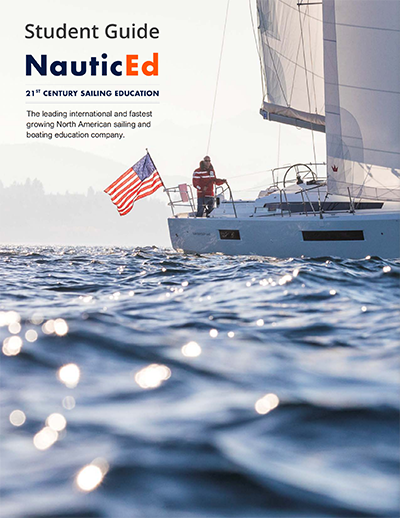
NauticEd Student Guide
Learn all about NauticEd courses, certifications and more.
View our Student Guide
Certification
Upon successfully passing a theory and practical assessment, you’ll earn the Catamaran Sailing Endorsement that goes into your sailing resume. This gives you as well as your family, friends, the yacht charter company, and the insurance company the confidence that you’re properly qualified to safely skipper a catamaran on a sailing vacation.
Assessment: Knowledge and theory competence are assessed online, whereas instructors assess skills and on-the-water competency continually during training or separately and according to a rubric to meet standards. View the Catamaran Sailing Endorsement on-the-water assessment rubric .
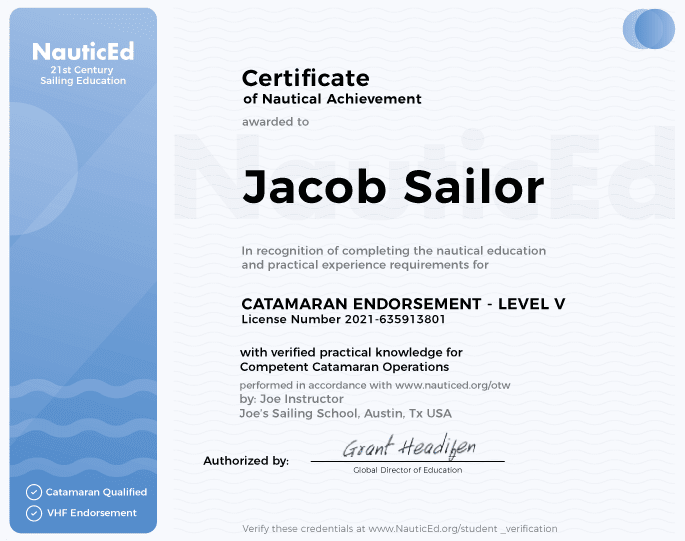
Training you can trust
NauticEd is recognized by the U.S. Coast Guard as conforming to the American National Standard for sailing training and assessment. NauticEd's sailing license exceeds the United Nations (UNE) resolution 40 ICC competence standards for yacht charter and is accepted by port authorities worldwide.
Get started today
Get started with the knowledge-theory online portion of the course.
Purchase the Catamaran Sailing Clinic and get started immediately online! If new to NauticEd, you will also receive 2 free bonus courses and an electronic logbook.
Search for schools and private instructors
Find a practical on-the-water training program near you or explore training in more exotic destinations.
How NauticEd works?
- Sailing Courses
- SLC - Sailing License
- Sailing Vacations
- Sailing Schools
- Practical Courses
- Boating Knowledge Base
- Fighting Childhood Cancer
- Free Courses Signup
- Gift a Sailing Course
- Sailing Opportunities
- Sailing Licenses and Certifications
- About the Sailing Certifications
- Sailing Blog & Helpful Articles
- NauticEd Podcast Series
- Yacht Charter Resources
- School Signup
- Instructor Signup
- Affiliate Signup
- Boat Sharing Software
- Sailing Industry Services
- Support & Contact
- Privacy Policy
WE WANT TO TRAIN ALEX SO THAT YOU HAVE AN AMAZING EXPERIENCE
Thank you for your feedback!
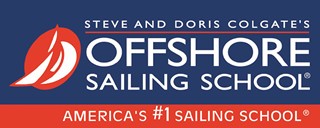
Learn to Cruise
Get started:, call: (888) 454-7015.
Request a Quote
- Private Sailing Courses
- Learn to Sail Certification Courses
- Fast Track to Sailing
- Family Learn to Sail Programs
- Fast Track to Cruising Courses
- Sailing Lessons and Sailing Rides
- Small Sailboat Cruising Course
- Online Learn to Sail Course
- Live Aboard Cruising Courses
- Bareboat Charter Courses
- Catamaran Cruising Courses
- Ultimate Cruising Course
- Big Boat Refresher
- Maneuvering Course
- Women-Only Sailing Programs
- Navigation Courses
- Performance Sailing Courses
- Fast Track to Sailboat Racing Courses
- Performance Racing Clinics
- Coastal Passage Making Courses
- Offshore Passage Making Courses
- Celestial Navigation Courses
- Powerboat Courses
- Sailing Certifications
- Top 10 Tips for Learning How to Sail
- Safety and Comfort Aboard
- Sails & Sail Trim
- Steering and Maneuvering
- Handling Spinnakers
- Engine Maintenance
- How to Become a Sailing Instructor
- How to Choose a Sailing School
- Yacht Lease Management Opportunities
Go From Beginner to Cruiser — Learn Big Cruising Boat Skills and Techniques
Picture yourself at the helm of a yacht you can live on, cruising with family and friends in the Caribbean, Greek Islands, South Pacific, and Croatia. Imagine the thrill of confidently taking family and friends for a sail on your own spacious cruising catamaran or monohull. If you are not yet a sailor, we have a course that takes you from “couch to the Captain’s chair!” If you already have basic sailing skills you’re ready to gain the knowledge and techniques to get into cruising. All these exciting sailing adventures can be yours to enjoy, when you Learn to Cruise on Offshore Sailing School’s liveaboard sailboats.
All-In-One Ultimate Cruising Course – Learn on a Monohull and a Catamaran in Just One Week
OSS 110 – Ultimate Cruising Course is a one-if-a kind, all-in-one experience you won’t find anywhere else! You will experience the nuances of three different types of sailboats , and go from no sailing experience to steering and crewing big cruising yachts identical to or similar to those you can charter all over the world. First you learn to sail. Then you learn to cruise boats nearly twice that learn-to-sail boat size, all in one week.
- The first two days you learn sailing basics on a Colgate 26.
- The next 2.5 days you experience the thrill that comes with learning big yacht cruising techniques on one of our 44′-47′ single-engine monohull cruising boats.
- The last 2.5 days you apply those big boat skills while learning how to maneuver a 40′-45′ catamaran (two hulls) with two engines.
Each evening you return to an air-conditioned room at the host resort where the course is offered, enjoy some of the resort’s amenities and eateries on site or in nearby restaurants, and get ready for more sailboat education again the next morning. This special 7-day Fast Track® to Cruising course experience is offered on select dates at one of Offshore Sailing School’s SW Florida locations, with a maximum of four students per instructor per boat allowed. Please call 888-415-7015 or 239-454-1700 for dates and availability. But don’t delay! This is an open cockpit daysailer to fully outfitted cruising boat opportunity only available through Offshore Sailing School!
Take Command of a 40-50′ Yacht While Learning and Living Aboard or Ashore
Offshore Sailing School learn to cruise courses – OSS 103, 104 and 114 – are taught on 40’ to 50’ monohulls and catamarans. This is the next step after completing Offshore Sailing School’s Basic Keelboat 101 sailing lessons on a 26′ Colgate 26 keelboat. On a cruising monohull or catamaran you spend 5 days gaining skills and knowledge to competently and confidently handle large monohulls and catamarans under sail and power – returning to the host resort each evening to sleep in an air-conditioned room and dine at local fun eateries, or living, cooking, and sleeping aboard during the 5-day period with one or two evenings at a restaurant as you cruise and learn. In those five days, you earn US Sailing Basic Cruising Certification and US Sailing Bareboat Cruising Certification, ready to skipper a yacht up to 50′.
OSS 101/103/104 and OSS 114 – Fast Track to Cruising® Courses
If you are not yet a sailor or have minimal experience, Fast Track to Cruising® courses start with two days of sailing lessons on a Colgate 26 while staying ashore at night, then five or six days on a 44’ to 50’ monohull (OSS 101/103/104) or 40′ to 45′ catamaran (OSS 101/103/104/114) – learning how to handle big sailing yachts.
Stay Ashore or Live Aboard Schedule Options
While most students opt for the immersive Fast Track to Cruising® live-aboard experience, a stay-ashore version of the cruising course is available in certain locations. Some students prefer the stay-ashore version in late summer when the water and air can be very warm, and an air-conditioned room is the perfect end to each day of the course. If you are traveling with family or friends who just want to enjoy the resort and not participate in sailing lessons, the stay-ashore schedule works well for all in your party. Call 888-454-7015 for stay-ashore date and location availability.
Do You Have Basic Sailing Experience Equivalent to OSS 101 Certification?
You may be able to test-out of the first two days of the Fast Track to Cruising® course if you have basic skills and are comfortable steering and maneuvering sailboats (keelboats with jib and mainsail) at least 20’ in length. Ask your Sales Associate for details.
Specially-priced Family Cruising Package
Our special family Fast Track® to Live Aboard Cruising Course is available for two adults and two family kids* between the ages of 12 and 25 learning together. This family sailing adventure is a perfect opportunity to reunite family members. learn the skills to bareboat charter together, and enjoy countless boating vacations in the future! Call 888-454-7015 for availability and pricing.
*Fifth family child between age 12 and 25 may be added for additional fee.
OSS 103/104 Basic Cruising and Bareboat Charter Cruising Certification Courses
These two courses are offered together in one week, taking you from the basics of cruising through the skills needed to skipper a large cruising yacht. If you prefer to sleep ashore in a hotel room each night, consider one of the Bareboat Cruising Certification Courses at our catamaran sailing school or monohull sailing school.
Live Aboard Cruising Courses provide total immersion in the cruising lifestyle. You sleep on the boat for your live aboard sailing lessons, while sharing all the tasks with your classmates, and learn while sailing to different destinations each day.
Navigation Courses and Passage Making Courses
The next step after learning to cruise sailboats is learning to sail far from land. OSS 105/106 Fast Track to Coastal Passage Making is an 8-day journey that starts with two days of Coastal Navigation instruction while staying ashore, then six days learning the nuances of sailing longer distances but not too far off shore. The final step in the Fast Track program is OSS 107/108 Fast Track to Offshore Passage Making – a 10-day program that starts with four days of Celestial Navigation while staying ashore, then six days heading off shore and out of sight of land.
Join a Colgate Sailing Adventures® Flotilla Cruise
Offshore Sailing School organizes flotilla cruises all over the world, for our graduates and competent sailors who love to explore under sail. These hassle free sailing vacation adventure cruises are lead by our experienced team – Nate and Heather Atwater.
International Proficiency Certificate (IPC) for Chartering Overseas
If you plan to charter in Europe or other areas overseas, you may be required to show your certification credentials and an International Proficiency Certificate. The IPC is issued by US Sailing for a nominal fee, once you have obtained US Sailing Basic Keelboat, Basic Cruising, and Bareboat Cruising certifications. For more information, view details on US Sailing organization’s website here.
The Colgate 26 is used in all Learn to Sail, Performance Sailing and Racing courses. Designed by Steve Colgate and naval architect Jim Taylor, the Colgate 26 is a popular high performance keelboat, used to train plebes and cadets at the U.S. Naval and Coast Guard Academies, great for club racing and daysailing. Read more…
Newsletter Signup
The Offshore Sailing School newsletter is emailed weekly to anyone interested in learning more about sailing and boating. It is packed with sailing and boating news, how-to tips, upcoming programs, contests and special deals.
CONTACT INFO
Toll-free US and Canada: 888.454.7015 Local and International: 239-454-1700
6338 Presidential Court, #201 Fort Myers, Florida 33919
© 2024 Offshore Sailing School - Official Site. OffshoreSailing.com is managed by Offshore Sailing School. Please report any issues to Offshore Sailing School.
- Privacy Policy
- Fast Track to Sailing | Beginner to Advanced in Six Days
- Fast Track to Boat Handling & Docking
- Catamaran Refresher & 114 Endorsement
- Docking Refresher Course on a Catamaran or Monohull
- IPC Prep With Cruising Certification & Catamaran Endorsement
- Private Courses
- Women’s Sail Sip Spa Week in the British Virgin Islands
- Top 10 Tips Learning How to Sail
- Captiva Island
- St. Petersburg
- Fort Myers Beach
- Scrub Island
- Bookstore New!
- St. Lucia & Windward Islands
- St. Martin & Leeward Islands
- Greece Ionian Islands
- Sicily In The Aeolian Islands
- Dubrovnik-Montenegro Flotilla Cruise
- Italy’s Amalfi Coast Flotilla
- TESTIMONIALS
- News, Specials & Events
- Offshore Sailing School Returns to Captiva Island, Florida
- Sailing – Out & About SWFL
- America’s Cup Endeavor Program Videos
- Growing Up Moorings
- Doris Colgate Sailing Clinic & Cup
- Steve Colgate Inducted Into National Sailing Hall of Fame
- OSS Student Proposes During Course
- Steve Colgate and National Sailing Hall of Fame
- St. Lucia and Windward Islands Flotilla Cruise
- Weathering Unexpected Bad Weather
- A Sailing Adventure He Still Can’t Believe Was Real
- 2016 Croatia Flotilla Cruise Diary
- How We Teach
- Steve & Doris Colgate
- Steve Colgate
- Doris Colgate
- Management Team
- Employment Opportunities
- Our Mission
- Our History
- Alumni Benefits
- Awards & Accolades
- Our Philanthropy
- Certification Levels
- BOOK FLOTILLAS!
- REQUEST A QUOTE

Home Education Adult Sailing Sailing Certification Courses & Endorsements Cruising Catamaran Endorsement

Sailing Certification Courses & Endorsements
Cruising catamaran endorsement.
Find a school near you
Recommended Equipment: The multihull endorsement course and examination shall be conducted on a catamaran of at least 34′, with wheel steering, twin engine auxiliary power, and adequate equipment inventory to complete all required certification outcomes.
Prerequisites: The prerequisite for the Catamaran Endorsement is a US Sailing Bareboat Cruising certification. This endorsement may be taught concurrently with any certification from the Bareboat Cruising level or higher.
Certification Requirements: The Catamaran Endorsement requires the successful completion of the following knowledge and skill requirements. These requirements are expected to be performed safely with confident command of the boat with a wind of at least 10 knots.
Practical Skills
Maneuvering under power:.
- Demonstrate holding position, pivot turn around center and around each hull, starting, stopping and speed control.
- Demonstrate leaving and returning to a dock under power.
- Demonstrate making way and maneuvering upwind and crosswind in forward and reverse. Demonstrate maneuvering with one engine.
Sailing Skills:
- Demonstrate the trim cycle for a catamaran, including the proper use of the traveler and/or boom vang. Demonstrate the use of a barber hauler when sailing off the wind.
- Demonstrate the specialized skills of tacking a catamaran.
- Demonstrate jibing, including proper control of the mainsail.
- Demonstrate shortening sail to depower the boat.
Overboard Rescue:
- Properly demonstrate one of the overboard rescue methods under sail, taking into account the boat’s performance characteristics.
- Properly demonstrate one of the overboard rescue methods under power, taking into account the boat’s performance characteristics.
Anchoring Techniques:
- Demonstrate the proper use of an anchoring bridle, including its deployment, retrieval, and storage.
- Demonstrate the use of two anchors off the bow.
- Pick up and properly secure to a mooring from the bow.
- Pick up and properly secure to a mooring from the stern.
Catamaran Characteristics:
- Describe the features of catamaran design, handling, and sailing performance.
- Describe the advantages and disadvantages of typical catamaran accommodations.
- Understand the maneuvering differences between a single engine boat and a twin engine boat.
- Describe the different arrangements of engine installations and their effects on maneuvering.
- Understand the limitations of visibility from the helm station on various designs. Explain how this affects docking procedures, crew responsibilities, and boat positioning.
- Understand how to use twin engines to steer, pivot, and maneuver the boat in close quarters.
- Understand why maneuvering in reverse, in high winds, while in close quarters may be necessary.
- Understand the techniques needed to land at a dock with one engine inoperative.
- Understand the use of one engine while motor sailing or steaming.
- Explain the effect of apparent wind and how it leads to the need for repeated sail trim adjustments as the boat speed increases.
- Explain the importance of the use of the boom vang and/or traveler to maintain proper mainsail shape.
- Understand the techniques for tacking, including proper steering throughout the maneuver.
- Explain the differences in jibing, including proper control of the mainsail leech.
- Understand the lack of obvious cues for the need to reduce sail as the wind increases, and explain what cues are available.
- Explain various techniques for reducing sail area, including traditional and single line mainsail reefing.
- Explain vessel performance characteristics and how that affects overboard rescue maneuvers.
- Discuss person-in-water retrieval techniques.
Anchoring and Mooring Techniques:
- Understand the need for an anchor bridle while using a single anchor off the bow.
- Explain the two most common arrangements of anchor bridles.
- Describe the steps required to set two anchors off the bow.
- Explain the advantages and disadvantages of picking up a mooring from the bow versus stern.
- Explain the steps required to pick up a mooring from the bow and the stern.
Safety at Sea
- Safety at Sea Planning
- Hosting a US Sailing Championship

Andrew Clouston SVP Programs & Services Email Andrew Clouston

Betsy Alison Adult Director Email Betsy Alison 401-342-7914

Diana Emmanuelli Competition Manager Email Diana Emmanuelli 401-342-7912
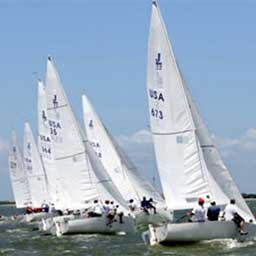
Karen Davidson Adult Program Coordinator Email Karen Davidson (401) 342-7934
Copyright ©2018-2024 United States Sailing Association. All rights reserved. US Sailing is a 501(c)3 organization. Website designed & developed by Design Principles, Inc. -->

Catamaran Guru Sailing Academy
South florida live-aboard rya sailing school on a bali 4.2.
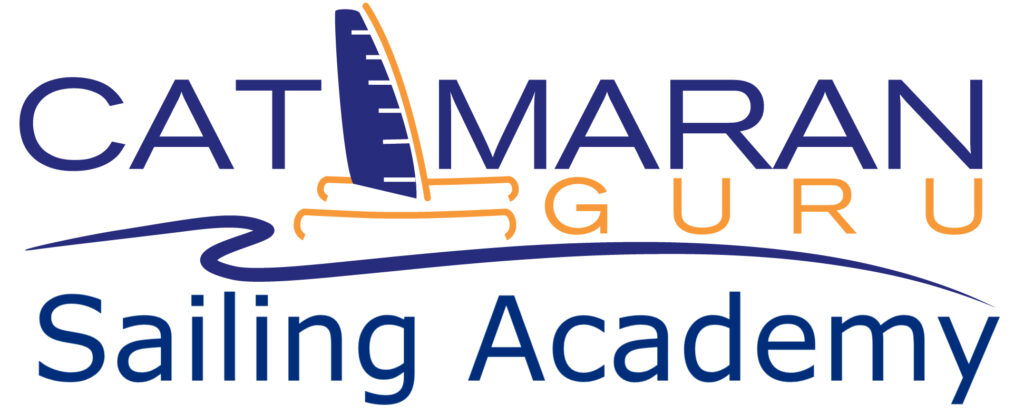
Our South Florida Catamaran Guru sailing school is one of a very small handful of sailing instruction facilities that offers the globally recognized RYA sailing courses and ICC Certification which we compared to ASA courses for you . RYA certifications are internationally recognized and are best for sailors who plan to explore international waters. And, our hands-on sailing instruction is offered aboard a 2021 Bali 4.2 or a Catana OC 50 performance catamaran ensuring the boat systems and electronics you learn on are state-of-the-art and similar to what most of our new boat owners will be buying and sailing.
RYA SEASCHOOL DETAILS
- ICC Certification
- Instructors
- Courses & Pricing
- Sample Itinerary
- Testimonials
- What to Expect
Catamaran Guru offers both ASA and RYA courses in different locations. However, the RYA courses are internationally recognized and is best if you want to sail abroad.
Our sailing school offers RYA sailing courses, catamaran orientation aboard your own boat, and blue-water cruising classes to the Bahamas and Florida Keys. A weeklong liveaboard sailing school is invaluable for anyone who plans to own their own boat, but especially those who plan to be full-time cruisers. During these hands-on sailing experiences, your seaschool instructor combines our real-life practical methods with the most up-to-date sailing theory lessons on board. These experiences led by Yacht Master and broker, Steele Greyling or Yacht Master, Matthew Joubert set you up to enjoy a stress-free cruising lifestyle.
**Bali 4.2 Classes available NOW. See booking schedule below . Schedule will be updated shortly. If you need info or want to place your name on the list CONTACT US!
Your RYA Instructors
Steele greyling.

Steele Greyling, a South African native, is an exceptionally experienced instructor providing catamaran sailing lessons, RYA sailing certification training, and ICC certificate exams. Steele, also, adeptly orients owners to their own catamarans teaching them boat systems and electronics aboard the very vessel they will cruise or liveaboard. In addition to living aboard Jelly Blue , his family’s Island Spirit 40, since a young child, Steele’s yachting qualifications include:
- RYA Commercial Yachtmaster Ocean
- RYA Yachtmaster Instructor
- RYA Powerboat Level 2 Instructor
- SAS Commercially endorsed Yachtmaster Coastal for Power and Sail
Matthew Joubert
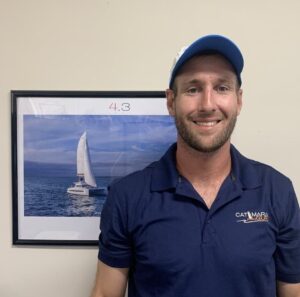
Matthew Joubert, a South African native, has wide interests include fitness, sailing, backpacking, SCUBA, fishing, and water sports of all kinds. His early career as a dive master led him to sailing when he joined a South Africa to Fort Lauderdale delivery. Soon he worked aboard crewed charter yachts working his way from dive master/spear-fishing guide to first mate and captain. Matthew’s certifications:
- RYA Yacht Master Offshore
- RYA Cruising Instructor Tender maneuvering
- STCW’ 95 Instructing
- RYA Power Boat Level ll Basic carpentry
- RYA Personal Watercraft Instructor
- PADI Dive Master Management
Check Out Our Amazing Testimonials
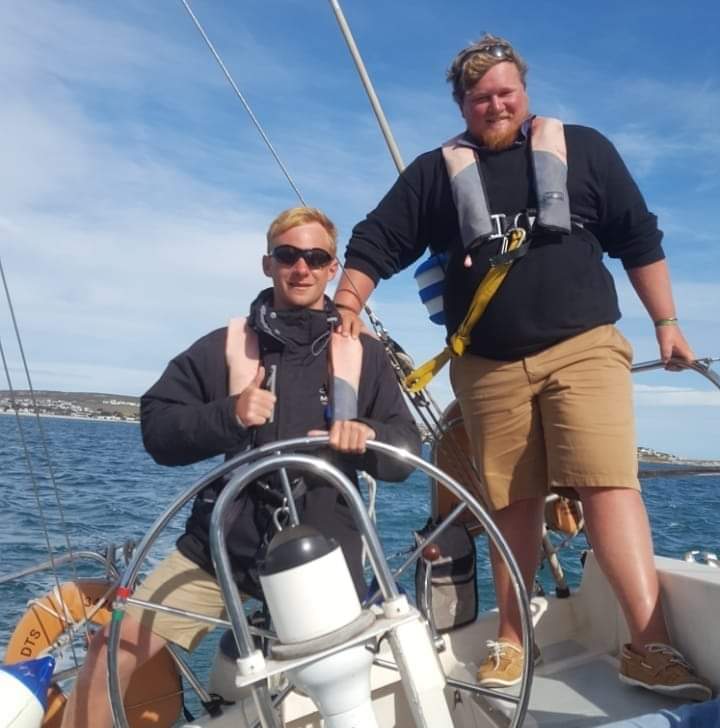
Sailing Courses & Owner Orientation Classes
Bali 4.2 sailing instruction.
- $3500 per person (master cabin)
- $3100 per person double stateroom, double occupancy
- $4,900 per person single occupancy.
- ICC (International Certificate of Competency) One-Day Exam @ $600 per person, minimum 4 people per day
- 3-day Boat Owner Orientation Course @ $500 per person per day, minimum 2 people
- $3100 per person double stateroom, double occupancy.
Catana 50 OC Sailing Orientation Classes
- $7,300 per person (master cabin)
- $6,700 per person double stateroom, double occupancy.
- $10,000 per person, single occupancy, minimum 2 people .
Book Your Sailing Course
Below these instructions are the courses the Sailing Academy is offering. See our course prices and descriptions here.
- For the course of interest (in picture gallery below – Competent Crew, Day Skipper or ICC Certifcation), click its “Book” button.
- Once the calendar opens up, choose the month you prefer. Look for GREEN DATES as they are the start of AVAILABLE CLASS SLOTS .
- Click on the green date then choose your cabin type: owner’s cabin, double cabin, or single occupant.
- Note that Bahamas courses are subject to favorable conditions. Typically the classes are done in Florida unless otherwise notified. Please discuss with us before you book if you have questions.
Sample Week-Long Sail Itinerary
This is a sample itinerary for our week-long Fort Lauderdale course. Your particular week may differ and be adjusted depending on weather and captain’s discretion. This itinerary is not guaranteed. Read about some of our own adventures exploring the Florida Keys and Bimini Island, Hemingway’s islands in the stream .
SATURDAY, you will board your boat at 3pm and get started with orientation, provisioning, boat systems, and safety. You will stay at the marina Saturday evening, dinner is not included Saturday.
SUNDAY morning, you will have a couple hours of academic instruction before starting sailing. Heading out from the marina you travel down the Intracoastal Waterway (ICW) to Port Everglades and then on to the Atlantic Ocean. Traveling on the ICW will give you a practical demonstration and practice with Rules of the Road, Lights and Shapes, draw bridge procedures, and proper VHF radio operation. From Port Everglades the boat will head south, with this day’s destination of Miami/northern Biscayne Bay, typically somewhere in the Key Biscayne area. Anchor is down in the late afternoon and you are free to swim, study, read, or otherwise relax. One of the students will have chef’s duty with another on galley duty. This will change each day.
MONDAY , while having coffee and breakfast, you will check the weather, look at the chart, and plot the course for the day, noting any hazards to be aware of. After an engine check and some class time sailing will commence. Lots of sailing drills: tacking, jibbing, Crew Overboard maneuvers . Lunch will be either underway or dropped anchor for a short break.
This day’s destination is the Elliott Key area. Anchor down in mid to late afternoon, furl the sails and coil the lines, then swim before dinner.
TUESDAY morning, after breakfast and morning routine, more sailing and drills, ending up in the southern Biscayne Bay/Card Sound/Barnes Sound area for the evening.
WEDNESDAY you will start to retrace your route, heading back to Noname Harbor and practice docking then on to northern Biscayne Bay anchoring off Key Biscayne Bay or Virginia Key.
THURSDAY morning, you will head back onto the Atlantic Ocean for the sail back to Ft Lauderdale. Depending on the weather (as always) you may be able to get out into the Gulf Stream, picking up a couple knots of boat speed and making a quick sail up the coast. But if the wind is from the north the sail will stay close to shore as you make your way to windward. Pull back into our marina in Hollywood in the mid to late afternoon.
FRIDAY morning will be the final review and test, if applicable. The instructor will review your tests and sign your logbooks. Boat clean-up, showers, and you will be done in the early afternoon, usually noon – 1pm but no later than 3pm.
what to expect

The Catamaran Guru base is in Loggerhead Marina, 1400 Marina Drive, Hollywood, FL 33109. We are about 20 minutes from Fort Lauderdale / Hollywood International Airport (FLL). Arrival Arrangements : Boarding is at 3pm on your start date. The Sailing School catamaran is called “Akani” a Bali 4.2 on slip 401. If you have luggage to be stowed, you are welcome to leave it at our office while the boat is being cleaned and prepared for your school.
ONBOARD PROVISIONING
All meals provided from Sunday morning to Friday lunch. Most dietary requirements can be accommodated. Note that as part of your education, you will do the cooking. Catamaran Guru provisions the boat; you will stow it away. Adult beverages are not included. Please supply your own. No cocktails before the anchor goes down!
WHAT IS INCLUDED?
This is an all-inclusive sailing school. Accommodation, food, and course materials are included. No taxes, marinas fees, or cruising permits are included.
GRATUITIES FOR THE INSTRUCTORS ARE VERY MUCH APPRECIATED!
DAILY SCHEDULE
See suggested itinerary above. IMPORTANT PRIOR TO BOARDING: Prior to arrival, you are required to sign up and register with the RYA and complete the theory course online if applicable. Please check with your instructor what course you will sign up for and what is required for
- Competent Crew course: The Competent Crew course introduces the complete beginner to cruising and teaches personal safety, seamanship and helmsmanship to the level required to be a useful member of crew of a cruising yacht.
- Day Skipper Course: The Day Skipper course teaches pilotage, navigation, seamanship and boat handling up to the required standard to skipper a small cruising yacht safely by day in tidal waters with which the student is familiar.
Please provide 1 x Color ID photo (with your name on the back of each photo).***Note that dates are subject to change due to weather**
GENERAL INFORMATION: What you need to bring with you
- Suitable clothing – layers are a good idea, T- Shirts, sun shirts / rashguards, swimsuit, shorts, windbreaker, warm jumper, trainers etc
- Sunscreen, hats/caps
- Weatherproof jacket
- Polarized Sunglasses
- Extra money for food & beverages for your off-boat dinner or lunch days
- If you prefer your own snorkel gear, please bring that along, otherwise we have some available onboard
Please read Catamaran Guru Sailing School Terms and Conditions .
Got Questions? Contact Steele Greyling
Didn't find the classes you need.
We partner with vetted sailing schools in other parts of the US and Bahamas that offer different class schedules.

For more than 30 years, we have been a part of the catamaran community and created Catamaran Guru™ to encourage and educate all the aspiring sailing out there. We understand the dream of traveling the world by catamaran and created a one-stop-shop to make that dream a reality for you.

- Stephen & Estelle
Get Started
- Yacht Sales
- Used Yachts
- Charter Management
- Boat as Business Programs
- Seminars & Events
SAILING SCHOOL
12 knots sailing courses.
Weather forecast
Learn how to read clouds and winds like a pro

Competent Crew
Introduction to sailing. Learn how to become an active crew
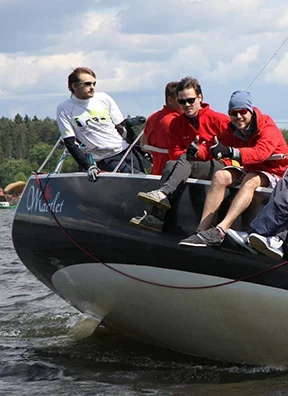
Bareboat Skipper
Recreational sailing yacht skipper of vessels up to 78 feet

Issued documents
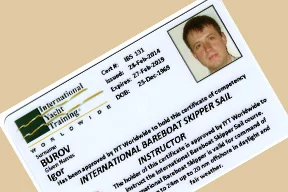
10 days live aboard course on power or sailing yacht. The key objective of the course is to teach candidates to become a recreational sailing yacht skipper and be able to charter and handle big cruising yachts on their own.
Ideal for those who already have little sailing experience and would like to learn coastal navigation.
- navigation at sea
- collision regulations
- practice at sea 200nm
- Skipper on a yacht up to 78ft. / 24m
- 20 miles offshore in day time
- in moderate weather conditions

5-day sailing course on board of a cruising yacht. The main objective of the course is to teach basic sailing terminology, parts and functions, basic sail trim, helm commands, seamanship and safety.
Ideal for candidates with little to no previous sailing experience who wish to train to become an active crew member on a power or sailing yacht.
- no special requirements
- Crew on a yacht up to 78ft. / 24m
- in sight of land and in fair weather
- only with professional skipper
Choose your sailing program. Where to start?
Introduction to sailing, on the coast.
Sailing knots - 3 hours
Understanding of the boat - 3 hours
On the water
Basic keelboat - 3 hours
Basic cruising
Safety on board - 3 hours
Live aboard sailing boat - 5 days
Live aboard power boat - 7 days
Bareboat cruising
Mandatory shore-based course for navigation and collision regulations at sea
Passage planning
Collision regulations
Practice at sea
Sailing boat - 10 days
Motor boat - 7 days
Advanced coastal cruising
Take additional shore-based courses prior to practice at sea
Long-term passage planning
Tidal navigation
Night sailing
Celestial navigation
Live-aboard course in tidal waters
Sailing yacht - 7 days
Upcoming courses
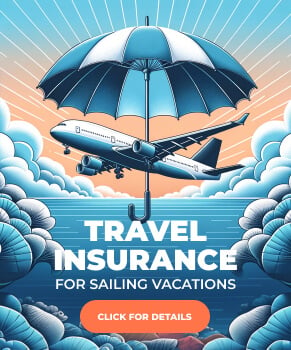
Blue water sailing practice
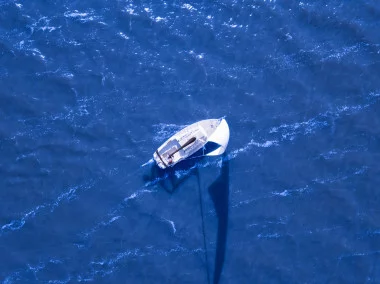
Availability
Competent crew
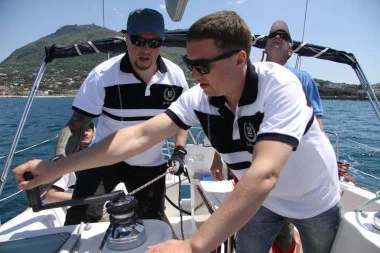
Marine weather forecasting

- Outremer 45
- Outremer 4X
- Outremer 4.zero
- Outremer 52
- Outremer 55
- Outremer 51
- Outremer 5X
- All the Outremer Fleet
- Personalized support
- Blue Water Sailing Seminars
- Our concept
- The Outremer team
- Our commitments
- Construction principles
- Our catamaran services
- After-sales customer service & Quality control
- Offshore Connected Catamaran Maintenance
- Concierge Services
- Our owners’ stories
- FAQ – Outremer catamarans

- Brokerage: used catamarans for sale
- Privacy Policy
- Legal Notice
- Grand Large Yatching
Outremer Academy: catamaran training
To fully support the preparation of your journey, we offer a wide range of catamaran training courses tailored to your unique needs. Learn from our experienced instructor – sailors.
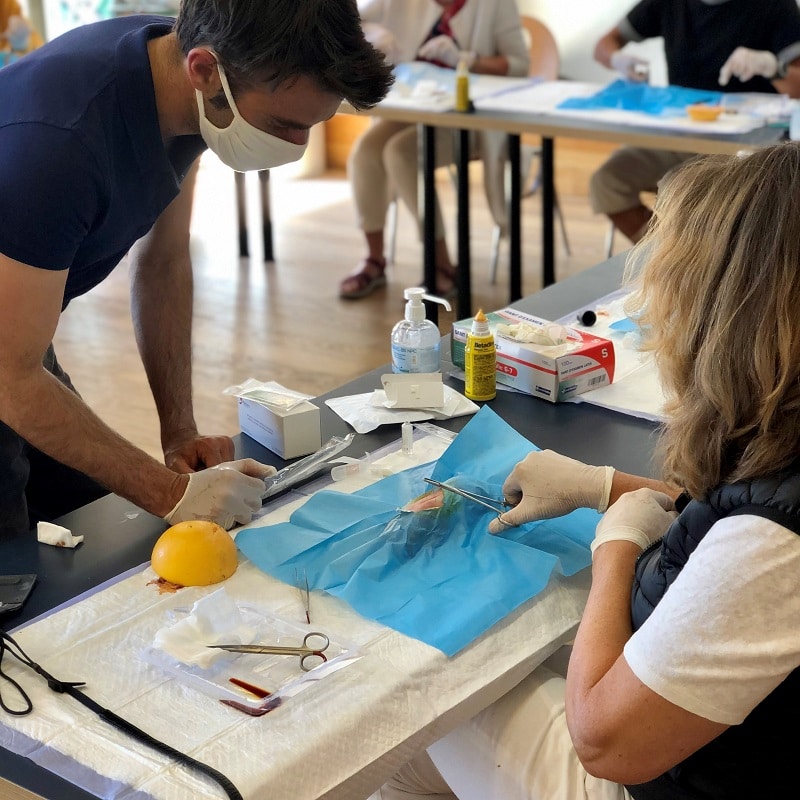
Outremer Week
Follow a unique catamaran training program, created by Outremer for its community of passionate owners!
The Outremer Week is 5 days of intensive training, to help quickly gain or improve your skills.
Rendezvous under the sun of La Grande-Motte, France, only a few steps away from the Outremer shipyard, for a week combining training lessons on land and at sea, and moments of relaxation and conviviality to encourage exchanges between participants.
Led by qualified speakers
This week of catamaran training will teach you all you need to know about blue water cruising and allow you to prepare your sailing project, improve your theoretical and practical nautical knowledge, share your experience and your passion with other Outremer owners.
Adapt your schedule of courses
According to your needs, choose from the various training modules offered: weather routing, electronics, medical, port and sea maneuvers, and more. Benefit from our full support package to quickly set sail on your catamaran, safely, comfortably, and with complete peace of mind!
We offer two editions a year
Attend Outremer Week Spring and/or Outremer Week Fall, with courses in French and English to best cater to our international community.
Over 10 nationalities were represented during our recent edition 2022!
❝ What a great week! We really enjoyed being in La Grande Motte and learned so much during these days. But beside the content we really felt part of the family and really appreciated your warm, competent and very caring approach to all our wishes.❞
Bent and Andrea – Future owners of an Outremer 45 – Participants of Outremer Week Spring 2021
Year-round training courses
Mixed and Ladies Only, our courses are tailored to your unique needs to allow you to apprehend your Outremer and thus leave for your sailing adventure with complete peace of mind
Ladies Only (courses exclusively for women)
In a totally relaxed atmosphere, gain the necessary autonomy to sail your blue water catamaran with confidence, alone or with your partner, thanks to our training courses exclusively dedicated to women, called Ladies Only.
The instructor, in this case the yachtswoman Nikki Henderson, adapts to the different profiles and levels, although the content of the women’s catamaran training remains similar to that of the mixed courses.
As a group, learn to:
– Tack and gyb easily and safely – Hoist and trim the different sails – Reef, learn the range of use of the sails and optimize according to the crew – Manage sailing maneuvers
Mixed (courses addressed to both men and women)
Do you need a helping hand to improve your sailing skills on an Outremer? Several times a year, we offer mixed courses that take place over a weekend in La Grande-Motte, France.
Take the opportunity to familiarize yourself with the boat. This will be an excellent foretaste, with complete immersion: you will be asked to handle the maneuvers yourself and spend the night on board, with meals included.
– Prepare the catamaran for sailing and anchoring – Practice maneuvering with the engine and under sail – Practice port entry and exit maneuvers – Anticipate winds and weather: use technical aids, VHF, forecasts, barometer – Use safety equipment and procedures – Maneuver in port
Individual Coaching
A tailor-made course
Progress quickly with Outremer personalized coaching, available upon request Example of topics addressed: maneuvers, optimizing sail trim, the basics of racing…
- Our Sailing Schools:
- Fort Lauderdale
- Virgin Islands
- Newport, RI

Cruise the Caribbean
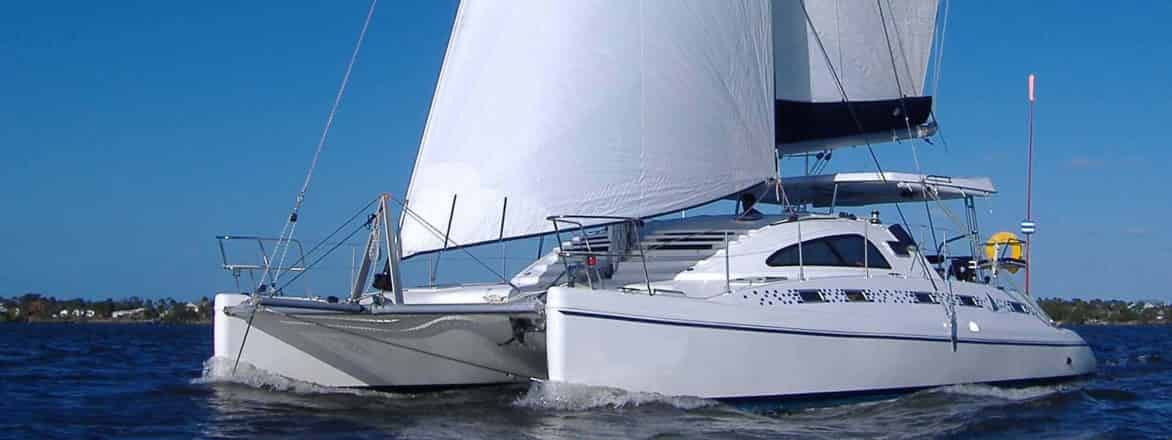
Sail a Catamaran
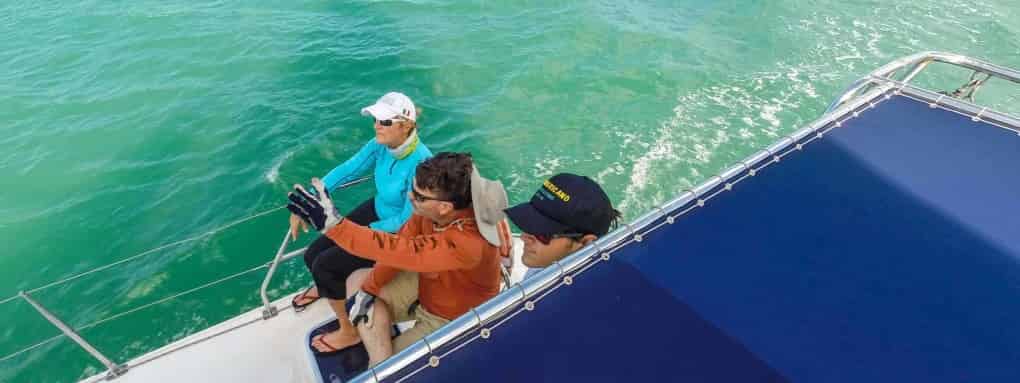
Personalized Instruction

Make Offshore Passages
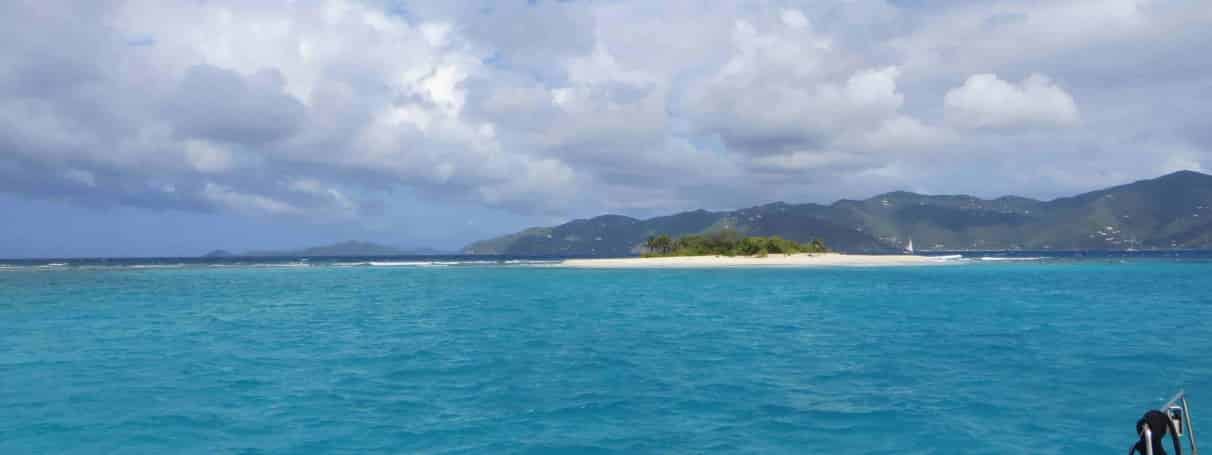
Make Tropical Landfalls
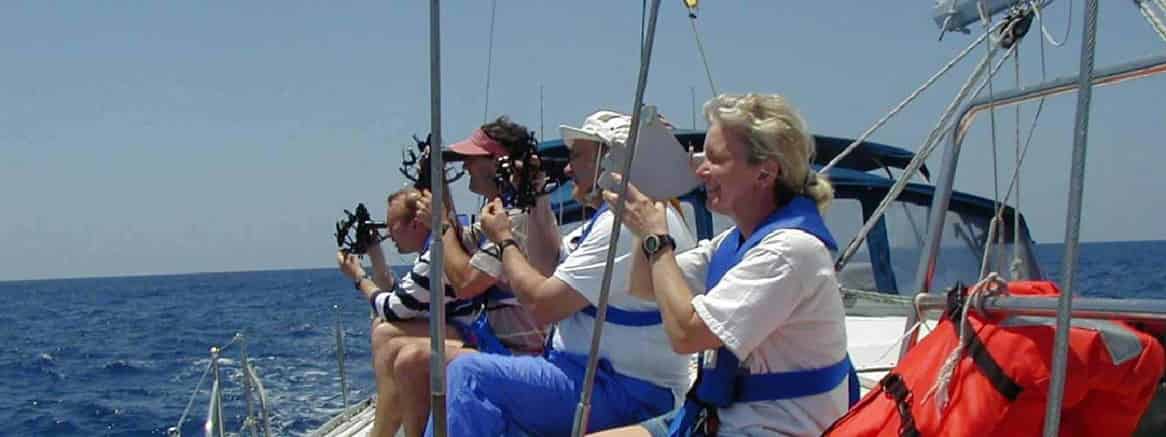
Navigate the Open Ocean
A week of sailing education, a lifetime of adventure.
Blue Water Sailing School is an American Sailing Association certified sailing school with lessons for sailors at every experience level. Our week-long, live-aboard cruising and sailing courses give dedicated students the experience and confidence to achieve their dreams of nautical adventure. We’re based in Fort Lauderdale, Florida and have additional sailing schools in Rhode Island, the Virgin Islands, and The Bahamas.
We’re one of the only sailing schools in the United States to offer sailing certification at every level of the American Sailing Association curriculum , and they’ve given us the ASA ’s Outstanding School award five times . Sailing education is all we do — with our specialized approach, you can be assured of the finest training available.
Learn more about Blue Water Sailing School and our award-winning instructors .

We teach sailing classes at every level, from basic sailing to offshore passagemaking. Whether you dream of daysailing on the lake with family and friends, becoming a charter captain, or crossing the ocean in your own boat — we’ll give you the training and experience you need to realize your vision.
View our course catalog to find out what we have to offer.
We actually went somewhere (Key Largo), rather than returning to the dock each evening. The course was made to be an adventure, as well as simply instructional. The weather was “made to order” — sun and gentle breeze Saturday through Wednesday, then Force 8 for our ‘foul weather instruction’ on Thursday.
I thought it was an excellent, challenging course. It definitely wasn’t a “cruise.” The instructor expected a lot from the students. I like that.
I have nothing but the utmost praise for your entire operation and the quality of the instruction that I received. Al Hatch is a consummate instructor and brings to this activity a love and a passion that is genuine and expansive. I hope to be able to return to Blue Water to experience some of the higher-level courses of instruction, and I certainly would have no trouble at all recommending your company to anyone.

TRAINING & LESSONS
Practical sailing lessons and catamaran training.
If you’ve finished your online coursework, it’s time to get out on the water! Whether you seek sailing lessons with or without formal certifications from NauticEd , call us at (409) 682-7745 to gain practical on-the-water training and confirm your preferred lesson day and time.
We train 7-days a week, 12 months per year. Schedule when it works for you. If you are doing group lessons, don’t worry about the group of 3 filling up or not. The lesson is going out with from 1 to 3 group members.
Join us for a 4-hour Private Catamaran Sailing Lesson. One on One training from the Captain. The best way to learn quickly.
4-Hour Private Sailing Lesson
4 hr | $950
Join us for a 4-hour Group Catamaran Sailing Lesson. Not to exceed 3 students and 3 guests. Learn the finer points of how to manage and sail a large sailing Catamaran.
4-Hour Group Sailing Lesson
4 hr | $650
Package of 10 Group Catamaran Training Lessons. Not to exceed 3 students and 3 guests. Highly discounted total package to ensure you are proficient in sailing a large Catamaran.
Package of 10 Group Sailing Lessons
4 hr | $5500
Package of 10 Private Sailing Lessons
4 hr | $8500
Join us for a 4-hour advanced catamaran lesson focused on the spinnaker. Learn how to raise, sail and store the spinnaker on a Lagoon 450.
Specialized spinnaker training
4 hr | $750
Find an Online Course | Book a Sailing Lesson
Our Sailing Lessons and Training: All Yachtcation courses are taught in collaboration with NauticEd , a fully accredited sailing education program recognized by yacht charter companies worldwide. All programs adhere to the United States Coast Guard-developed American National sailing training and assessment standards. Whether you want to be a better crew member on a sailboat or a fully certified and licensed skipper, we can help you reach your goals.
We do this by integrating our professional on-the-water practical training with the NauticEd sailing certification program . Learn more about our courses below and register for the ones that help you meet your sailing goals!

• Best-in-class sailing education, certification, and licensing
• Learn from captains with over 20 years of commercial and private experience
• Best-in-class Catamaran Endorsement sailing school

Bareboat Charter Master Rank
All yacht charter companies require you to have a sailing resume if you want to rent (charter) their boats. Your resume should contain a list of previous experience, formal coursework, and sign-off from an accredited instructor as to your charter readiness. The NauticEd online resume building tool is perfect for this.
Online Theory Courses
We first start you out with the NauticEd Bareboat Charter Master bundle of online courses. There you will learn all the theory knowledge for bareboat chartering. You take these courses in your own time at home. You also log your previous experience in your free NauticEd electronic logbook.
On-the-Water Practical Training
Our instructors will train you until you become competent at all the skills needed for bareboat chartering.
Once you are competent at practical skills and knowledge, our instructor will assess you for bareboat readiness using an internationally recognized set of skill testing rubrics.
Certification
Once you have been determined as knowledgeable and competent, and have met the charter company requirements of experience, NauticEd will issue you a bareboat Charter Certification which is accepted by all charter companies worldwide*.
Large Catamaran Endorsement
Brie is our Lagoon 45-foot catamaran. This boat is known as the workhorse of the yacht charter industry and a luxury catamaran sailboat. We can train and assess you on Brie so that your sailing resume reflects the proper endorsement and is accepted by yacht charter companies worldwide.
Start first by taking the NauticEd online Catamaran Sailing Confidence course . Inside the course, you can play the Catamaran Maneuvering game. While only a game, it helps understand the dual engines set up associated with catamaran maneuvering.
Practical On the Water Training
Our professional catamaran qualified instructors will train you until you become competent at all the skills needed for operating a large catamaran under power in the marina and sailing in open waters. We spend a significant amount of time maneuvering in close quarters so that you are completely confident.
Once you are competent at practical skills and knowledge, our instructor will access you for catamaran readiness using an internationally recognized set of skill testing rubrics.
Once you have been determined as knowledgeable and competent, NauticEd will issue you a Catamaran Endorsement on your Resume and certificate. This endorsement is accepted by all charter companies worldwide*.
Qualified Crew Member
If you want to contribute as a knowledgeable crew member on a large sailboat for day sailing or for bare-boat chartering, you’d agree that you should have the proper skills and knowledge.
Online Theory Courses We first start you out with the NauticEd Qualified Crew Member online course. There you will learn all the theory knowledge for operations of a sailboat. You take these courses in your own time at home. You also log your previous experience in your free NauticEd electronic logbook.
On-the-Water Practical Training Our instructors will train you until you become competent at all the skills needed to knowledgeably and skillfully contribute as a crew member. This training can also lead to a future upgrade to skippering a sailboat.
Assessment Once you are competent at practical skills and knowledge, our instructor will access you for readiness to be signed of as a Qualified Crew
Certification Once you have been determined as knowledgeable and competent, NauticEd will issue you a Qualified Crew certification and all your accomplishments will be reflected in your sailing resume.
Call us at (409) 682-7745 to gain practical on-the-water training and confirm your preferred lesson day and time.
*You will need a sailing license for Mediterranean locations. The NauticEd SLC™ (International License and Credentials) satisfies these requirements.
Tel.: +7(495) 722-71-97
- About the Company
- Useful materials
Pleasure crafts operators training
Personal watercrafts operators training
- GMDSS training courses
- International crew
- International flotilla skipper
- International bareboat skipper
- Small Powerboat & RIB Master
- Powerboat skipper
- Yachtmaster
International Certificate of Competency
Traffic in transboundary water bodies
In Estonia the transboundary water bodies are the Narva river, the Narva Water Reservoir, the lake Peipsi, Pihkva and Lämmijärv....
Moving at sea
Before you go out to the sea: • Check the technical conditions of floating vessel and navigation equipment...
Navigation in foreign waters
Within the Schengen visa zone, people can arrive and leave the state via any ports. NB! It is necessary to carry always the identification...
Ask your question:
The school trains pleasure crafts operators to receive international certificate of navigator. International certificate of navigator gives the right to drive any small boat of up to 24 meters without limiting the power of the engine, the area of the sail and the region, in fact all over the world.
Every student, who was trained in our Centre under the special program, and successfully passed the exam may apply for international certificate of navigator. This course involves obtaining knowledge of navigation, shipbuilding, theory of international law of the sea, medicine, hydrometeorology, COLREG, GMDSS, MARPOL, SOLAS, etc.
Experienced skippers and yachtsmen can take the exam without attending lectures. The program also involves mandatory maritime practice.
International certificate of navigator issued by the Estonian Bureau of the Ministry of transport to a student who successfully passed the exam. The exam is controlled by the Estonian maritime administration.
Address: Prospekt Mira 69, Moscow, 129110, Russia.
Tel.: +7(495)722-71-97
- Couch to 5K
- Half Marathon
- See All ...
- Olympic/International
- IRONMAN 70.3
- Road Cycling
- Century Rides
- Mountain Biking
- Martial Arts
- Winter Sports
ACTIVE Kids
Sports camps, browse all activites, race results, calculators, calculators.
- Running Pace
- Body Fat Percentage
- Body Mass Index (BMI)
- Ideal Weight
- Caloric Needs
- Nutritional Needs
- Basal Metabolic Rate (BMR)
- Kids' Body Mass Index (BMI)
Running Events
- Half Marthon
Running Articles
- Distance Running
- Trail Running
- Mud Running
- Training Plans
- Product Reviews
Triathlon Events
- Super Sprint
Cycling Events
Triathlon articles, cycling articles.
- Cyclo-Cross
Fitness Events
- Strength Training
- Weight Lifting
Fitness Articles
- Weight Loss
Sports Events
Outdoor events.
- Book Campground
Sports Articles
- Water Sports
- Snowshoeing
Nutrition Articles
- Supplements
Health & Injury Articles
- Health & Injury
- Physical Health
- Mental Health
- Injury Prevention
Kids & Family
- Infants (0-1)
- Toddlers (2-4)
- Big Kids (5-8)
- Tweens (9-12)
- Teens (13-18)
- Cheerleading
- Arts & Crafts
- Kids Fitness
ACTIVE Kids Articles
Active works®.
From marketing exposure to actionable data insights, ACTIVE Works® is the race management software for managing & marketing your events.
Idaho Swim Center Summer 2024
About this event.
We’ll send your reminder 2 days before this event closes so you don’t miss out.
You will no longer receive email alerts about this activity.
Please complete the online waiver before swimming at the UISC.
May 13 through June 7 Summer Lap Swim Hours
Morning Lap Swim 6:00 to 8:30
Noon Lap Swim 11:00 to 1:00 (May 13-16, 20, 21 and 23 Lap Swim 11:15 to 12:15 to accommodate Moscow School District 4th and 5th Grade Swim Units and St. Mary's Parish Swim Unit)
Evening Lap 6:00 to 7:00
No Weekend Lap Swim
June 10 through July 19 Summer Lap Swim Hours Begin
Noon Lap Swim 11:00 to 1:00
Evening Lap 4:30 to 7:00 (Monday through Thursday)
No Lap Swim May 27, June 19 and July 4.
May 13 - July 19, 2024
Monday, Tuesday, Wednesday, Thursday, Friday, Saturday, Sunday
Add to calendar
University of Idaho Swim Center
Summer 2024 Swim Pass
Up to $10 off this event
with ACTIVE Advantage
- Save up to $10 with no processing fees
- Extra 15% off already-reduced gear and travel
- Exclusive partner discounts…and more!
- Annual $50 credit for brand-name shoes
- Up to $90 in race rebates each year…and more!
More events from this organizer
Share with friends
Where would you like to share?
Mobile Apps
- Couch to 5K® View All Mobile Apps
Follow ACTIVE
© 2024 Active Network, LLC and/or its affiliates and licensors. All rights reserved.
Sitemap Terms of Use Copyright Policy Privacy Policy Do Not Sell My Personal Information Cookie Policy Privacy Settings Careers Support & Feedback Cookie Settings
- Get Your 3rd Race FREE
- Up to $10 off Event Fees
- Get $50 off New Running Shoes
- FREE pair of Pro Compression Socks
- Up to 15% off GearUp
- VIP Travel Discounts
...and more!

- Find A School
- Certifications
- North U Sail Trim
- Inside Sailing with Peter Isler
- Docking Made Easy
- Study Quizzes
- Bite-sized Lessons
- Fun Quizzes
- Sailing Challenge

2024 Arabella Sweepstakes Winners: Denise Dyer, Bruce Garrow, and Jim Sullivan
By: Zeke Quezada, ASA American Sailing , American Sailing Vacations , Giveaway , Sweepstakes
American Sailing ran a sweepstakes with a grand prize of a dream vacation this summer aboard the Sailing Yacht Arabella. Our winners have been announced! Denise Dyer, Bruce Garrow, and Jim Sullivan’s journeys into the world of sailing have been as diverse as the winds that guide their sails. These three individuals, each with their unique story, are the winners of the American Sailing Sweepstakes.

Denise Dyer: Sweepstakes Winner
One week aboard Arabella on a luxury cruise of New England
“Sailing has been a dream of mine since High School. It seemed it was never going to become a reality for me. But I never gave up hope and always chose the “Rocking of the sailboat on the water” as my white noise to help me relax and fall asleep and keep my dream alive.”
Despite the passage of time, Denise never relinquished her dream. It wasn’t until the tumultuous year of 2021, amid the global pandemic, that fate intervened, setting her course toward the open water.
A chance encounter with fellow artists at an art show led Denise to Judy Lightle, a sailor who would be the impetus to learn the art of sailing. “I was exhibiting my work at an art show. I took a quick restroom break and washed my hands at the outside washing station. As I finished, I said to the man standing next to me – that I prayed I sold all my art pieces so I could pack up and head somewhere by the ocean to finally learn to sail. He instantly grabbed my hand and said, “Come with me now – you need to meet my wife; she will help you make it happen!”
With Judy’s encouragement and the expertise of Captain Chris Rousseau from Island Bound Adventures, Denise embarked on her sailing journey. From the classroom to the Grapevine Lake, TX shores, Denise and her husband, Rick, honed their skills under Captain Rousseau, earning their ASA 101/103 certifications.
Life took an unexpected turn as Denise found herself tethered to home, caring for her ailing mother. Denise clung to her dreams, finding solace in the promise of one day getting to the coast and resuming her sailing journey. It was serendipitous when she entered the American Sailing Sweepstakes; Denise pleaded to the universe for a glimmer of hope. And when the call came, informing her of her victory aboard the Arabella, Denise knew that dreams were always within reach, no matter how distant.
Denise grew up in New England and has wanted to sail to Martha’s Vineyard and Nantucket for as long as she can remember. Her dream of sailing on the open ocean is about to come true.
“My husband and I recently started watching sailing videos again and studying the Coastal Cruising Made Easy book and the Coastal Navigation & Piloting Course companion DVD that I ordered from the ASA website while working towards our goal again. We explored what types of trips might be available through ASA for our June anniversary in New England. We were both born in Maine, and we love the New England area. We were married in Maine. We go to BoothBay every summer we can for the BoothBay Wind Jammer Days. So, you can imagine how excited I was when I saw “Enter to Win the New England Sailing Adventure” on the Arabella!!!!”
Here’s to NEVER giving up on your dreams!

Bruce Garrow – winner of 2 nd prize in the American Sailing Arabella Sweepstakes
3-months of unlimited access to our on-demand online class library
Bruce Garrow began sailing on a sailfish his wife owned when they met. They still own that boat and continue to sail regularly. “I joined the ASA in 2011 and completed the advanced coastal cruising standard with Rob Swain of Rob Swain Sailing School in Newport, Rhode Island.”
Bruce has bareboat chartered in the British Virgin Islands and, this past winter, participated in the “Beer Can” races at the Waikiki Yacht Club. “Those Friday evening races from Ala Wai Harbor to the Diamond Head Bouy were competitive and a lot of fun.”
Back on the East Coast, and Bruce is looking forward to sailing this summer at Sail Newport.

Jim Sullivan winner of 3rd prize in the American Sailing Arabella Sweepstakes
$150 Online store credit at ASA.com
Jim Sullivan has called San Diego home for the last 30 years. Being part of the San Diego sailing community has allowed him to sail and race year-round over the past decade leading to regular success on the water. “Sailing in San Diego has led to regular podium finishes and Championship wins in PHRF sailing inshore, offshore, and internationally.”
Racing and recreational sailing have Jim out on the water multiple times each week. Between the local yacht clubs and the Cortez Racing Association, many opportunities exist each month to get on the water. Jim prefers racing locally in midsize monohulls such as a Tripp 40’, Olson 40’, Beneteau 36.7′, and Beneteau F47.7.
“My affiliation with American Sailing allows me to sign up for recreational-type events on smaller boats like the J27 and C22.”
Interested in sailing aboard Arabella for yourself?
You can! Learn more and book a trip today.

Related Posts:

- Learn To Sail
- Mobile Apps
- Online Courses
- Upcoming Courses
- Sailor Resources
- ASA Log Book
- Bite Sized Lessons
- Knots Made Easy
- Catamaran Challenge
- Sailing Vacations
- Sailing Cruises
- Charter Resources
- International Proficiency Certificate
- Find A Charter
- All Articles
- Sailing Tips
- Sailing Terms
- Destinations
- Environmental
- Initiatives
- Instructor Resources
- Become An Instructor
- Become An ASA School
- Member / Instructor Login
- Affiliate Login

IMAGES
VIDEO
COMMENTS
The sailing course combines the Basic Sailing (ASA 101), Basic Coastal Cruising (ASA103), Bareboat Chartering (ASA 104), and Cruising Catamaran (ASA 114) levels of the ASA curriculum. We are also one of the only sailing schools to offer a course in advanced catamaran sailing (Course C+ Cat: Advanced Catamaran Skipper). During this weeklong live ...
The ASA sail training courses provide a good grounding for all new sailors and advanced courses increase competency and confidence. While learning to sail monohulls will provide many useful basics of sailing knowledge, instruction aboard a catamaran, and even better aboard your catamaran or a similar model is the best possible scenario.
The first two days of your Fast Track to Cruising® sailing lessons are on a Colgate 26 in OSS 101- a high-performance open-cockpit keelboat daysailer used by the US Naval and Coast Guard Academies for training plebes and cadets. Then you board one of our cruising boats - a 40′ to 48′ catamaran or a 43′ to 50′ monohull for OSS 103/ ...
Understanding the Basics of a Catamaran. A catamaran is a boat with two parallel hulls connected by a bridge. Understanding the basics of a catamaran is important to fully enjoy the unique sailing experience it offers. These hulls provide stability and reduce drag, enabling higher speeds. Catamarans are used for sailing, cruising, and racing.. The design allows for a spacious interior layout ...
The Cruising Catamaran Certification Course is a four-day sailing class designed to create confident, competent catamaran sailors. You'll spend the first day learning the fundamentals of sailing while aboard a 33-39' monohull. ... Day 2 8:00 am - Captain boards the catamaran for training session - quick intro to catamaran systems and ...
The Catamaran Sailing Confidence Course is presented in three modules in English and in French. 1. Aboard your Catamaran. 2. Maneuvering a Catamaran. docking a catamaran under power. mooring and anchoring. effective use of spring lines. 3.
Here are some key points to consider about sails and rigging: 1. Sail design: The design of the sails, including their size, shape, and material, plays a significant role in the catamaran's performance. High-performance racing catamarans often have larger, more efficient sails that generate greater speed. 2.
Jonathan M Augelli. The best learn to sail online with Nautilus Sailing's award-winning instructors in the comfort of your own home. Gain knowledge from sailing educators who have trained over 4,000 students. This masterclass contains 36 lessons in easy to digest sessions.
Learn how to sail catamarans for yourself or on a bareboat sailing vacation with the Catamaran practical sailing course. NauticEd online and on-the-water instruction. ... NauticEd is recognized by the U.S. Coast Guard as conforming to the American National Standard for sailing training and assessment. NauticEd's sailing license exceeds the ...
ASA 114, Cruising Catamaran. Able to skipper an auxiliary-powered sailing cruising catamaran of approximately 30 to 45 feet in length during a multi-day liveaboard cruise upon inland or coastal waters in moderate to heavy winds (up to 30 knots) and sea conditions. Knowledge of catamaran structure, components and features, performance under sail ...
Sailing Catamaran For Beginners ⛵ Learn How to Sail a Catamaran | In today's sailing vlog, we teach you everything we've learned on how to sail a catamaran w...
Offshore Sailing School learn to cruise courses - OSS 103, 104 and 114 are taught on 40' to 50' monohulls and catamarans. These next step up from Basic Keelboat OSS 101 sailing lessons provide skills and knowledge to competently and confidently handle large monohulls and catamarans under sail and power. In five days, you can earn US ...
Find a school near you. Recommended Equipment: The multihull endorsement course and examination shall be conducted on a catamaran of at least 34′, with wheel steering, twin engine auxiliary power, and adequate equipment inventory to complete all required certification outcomes. Prerequisites: The prerequisite for the Catamaran Endorsement is a US Sailing Bareboat Cruising certification.
The Catamaran Guru base is in Loggerhead Marina, 1400 Marina Drive, Hollywood, FL 33109. We are about 20 minutes from Fort Lauderdale / Hollywood International Airport (FLL). Arrival Arrangements: Boarding is at 3pm on your start date. The Sailing School catamaran is called "Akani" a Bali 4.2 on slip 401.
12 Knots Sailing School offers 5 to 10 days sailing courses in most exotic destinations. Learn to sail and make a fantastic adventure of a lifetime. ... Live aboard training motor yacht Shorebased courses Online seminars and webinars Sailing tips & tutorials ... Learn to sail on catamaran or monohull. This program is ideal for those candidates ...
As a group, learn to: - Prepare the catamaran for sailing and anchoring. - Practice maneuvering with the engine and under sail. - Practice port entry and exit maneuvers. - Anticipate winds and weather: use technical aids, VHF, forecasts, barometer. - Use safety equipment and procedures.
BOSS courses are usually the best-priced anywhere in the Caribbean - we can do this because we've been running the school for more than 20 years, run the classes most weeks of the year, fill the slots, and have many returning guests. Includes: Fully-equipped yacht with ASA Instructor. Food for 6 breakfasts, 6 lunches, 3 evening meals.
A Week of Sailing Education, a Lifetime of Adventure . Blue Water Sailing School is an American Sailing Association certified sailing school with lessons for sailors at every experience level. Our week-long, live-aboard cruising and sailing courses give dedicated students the experience and confidence to achieve their dreams of nautical adventure. We're based in Fort Lauderdale, Florida and ...
Practical Sailing Lessons And Catamaran Training. If you've finished your online coursework, it's time to get out on the water! Whether you seek sailing lessons with or without formal certifications from NauticEd, call us at (409) 682-7745 to gain practical on-the-water training and confirm your preferred lesson day and time. We train 7-days a week, 12 months per year.
The 60 North Expedition Sailing Club has announced the opening of a branch of its school in Moscow. Students of the new branch will practice at «Konakovo River Club», and the branch will be led by experienced yachtsman Yuri Kotlyar. School of Yacht Club 60 North works under the license of International Yacht Training and gives amateur license for all levels - from basic IYT Bareboat Skipper ...
Courses Pleasure crafts operators training. The school trains pleasure crafts operators to receive international certificate of navigator. International certificate of navigator gives the right to drive any small boat of up to 24 meters without limiting the power of the engine, the area of the sail and the region, in fact all over the world.
Participation in offshore regattas is not possible without prior certification of a maritime survival course. And it's not safe to go on your own without such training. The next opportunity to take such a course without leaving Russia will be in a week, on November 16-17. PROYachting company will hold training «World Sailing Approved Sea Survival Course» on the basis of Moscow Royal Yacht Club.
Please complete the online waiver before swimming at the UISC. May 13 through June 7 Summer Lap Swim Hours. Morning Lap Swim 6:00 to 8:30. Noon Lap Swim 11:00 to 1:00 (May 13-16, 20, 21 and 23 Lap Swim 11:15 to 12:15 to accommodate Moscow School District 4th and 5th Grade Swim Units and St. Mary's Parish Swim Unit)
"Sailing in San Diego has led to regular podium finishes and Championship wins in PHRF sailing inshore, offshore, and internationally." Racing and recreational sailing have Jim out on the water multiple times each week. Between the local yacht clubs and the Cortez Racing Association, many opportunities exist each month to get on the water.